FAQ - Advanced Bathroom Queries
How Do You Unblock a Toilet Drain

Ever been in a tough spot with a toilet drain that won’t clear? Don’t worry, we’re here to walk you through the process of unclogging it.
In this article, we will provide you with a step-by-step guide on how to tackle this common household issue. From gathering the necessary tools to exploring homemade drain cleaner solutions, we will equip you with the knowledge to masterfully unclog your toilet drain.
Let’s dive in and get that drain flowing freely once again.
Key Takeaways
- Gather the necessary tools and materials, such as a plunger with a flange, a toilet auger or snake, baking soda and vinegar, a bucket, and a wrench.
- Assess the severity of the blockage by inspecting the toilet drain for debris, checking the water level and drainage, and looking for signs of a main sewer line blockage.
- Attempt to unclog the toilet using a plunger by ensuring a good seal, submerging the plunger cup in water, and using a rapid and increasing plunging motion.
- If the clog persists, try using a toilet auger by inserting it into the toilet bowl, cranking the handle to extend the cable, breaking through the clog, and retracting the cable.
Gather Necessary Tools and Materials
We need to gather the necessary tools and materials to unblock a toilet drain. Ensuring toilet drain safety is essential during this process.
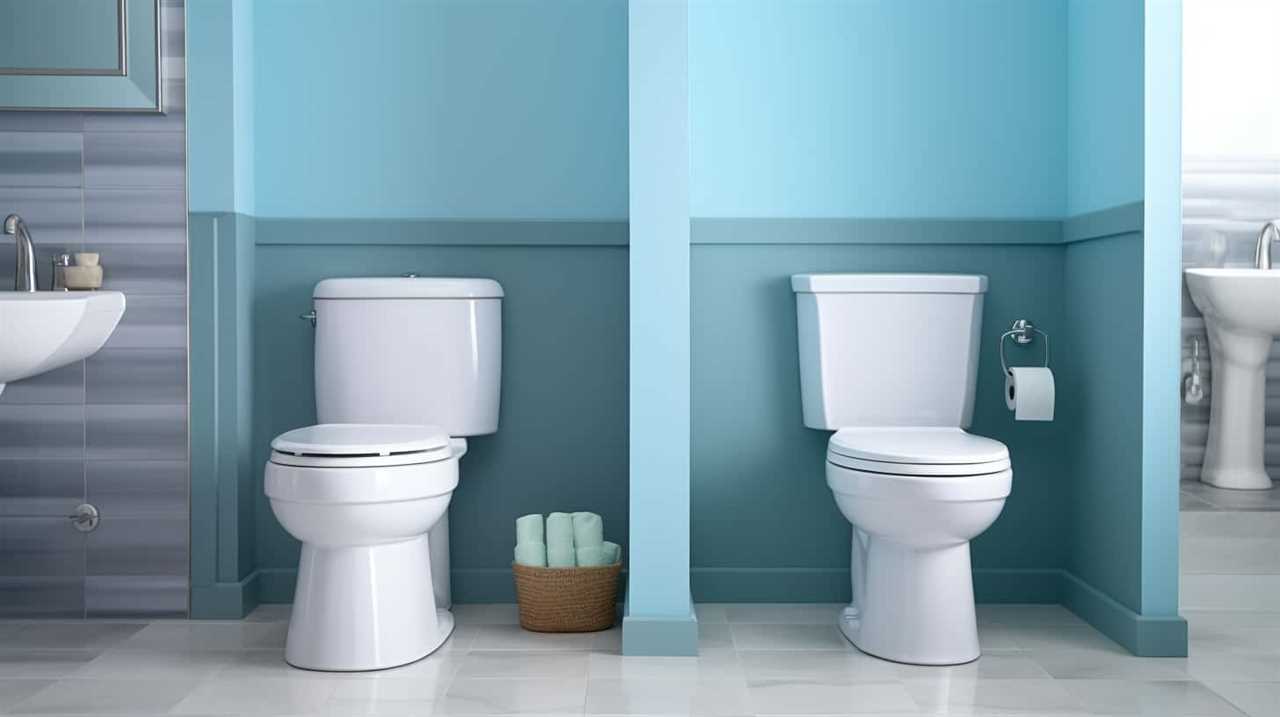
First, we require a plunger, preferably one with a flange for a better seal. The plunger will help create the necessary pressure to dislodge the blockage.
Additionally, a toilet auger or snake can be used to reach deeper clogs.
Eco-friendly drain cleaning options are also available, such as using a mixture of baking soda and vinegar. These natural alternatives are safe for the environment and effective in breaking down blockages.
Once we’ve gathered these tools and materials, we can proceed to assess the severity of the blockage and determine the appropriate steps to take.
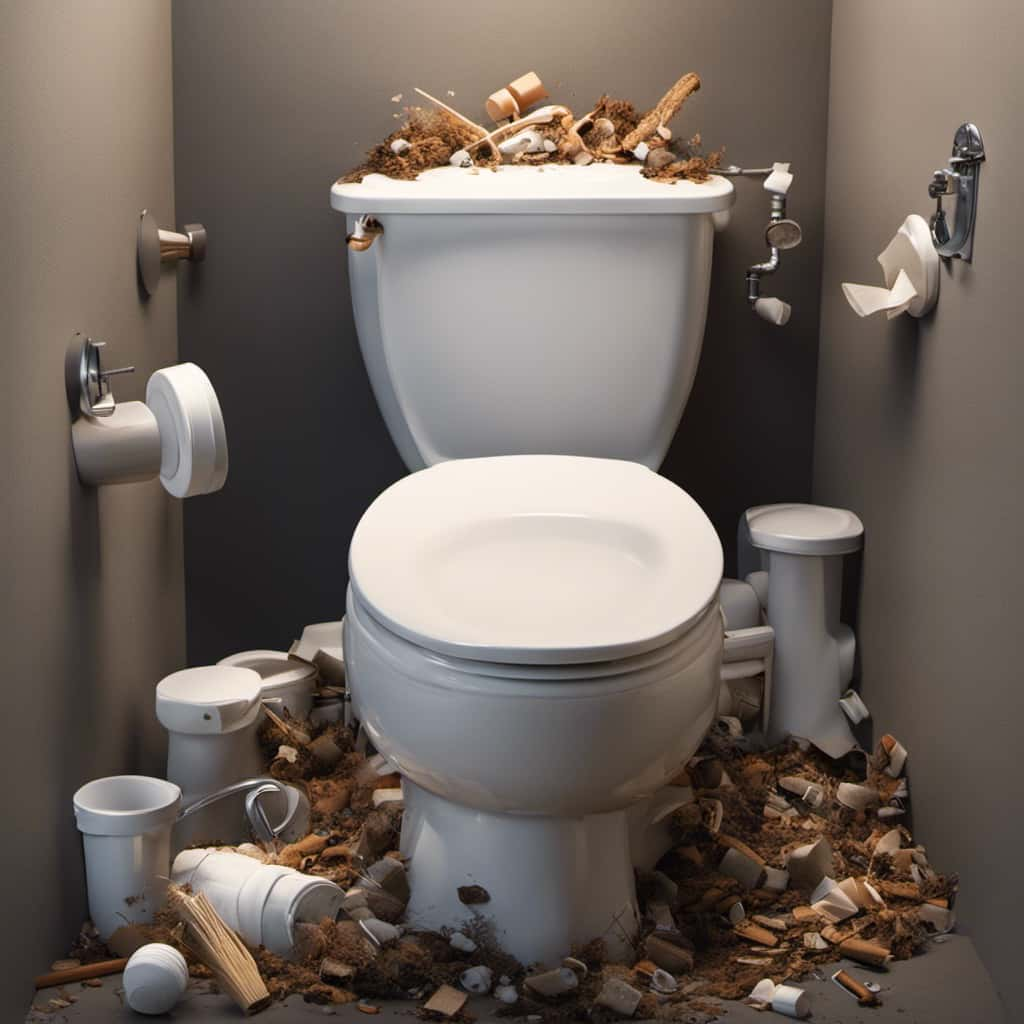
Assess the Severity of the Blockage
To determine the severity of the blockage, we can start by using a flashlight to inspect the toilet drain. This step is crucial in assessing blockage severity and identifying signs of a serious blockage.
Shine the flashlight down the drain and look for any visible debris or obstructions. Pay close attention to the water level in the bowl. If the water is slowly draining or not draining at all, it may indicate a significant blockage.
Additionally, if you notice water backing up into other fixtures, such as sinks or showers, this could suggest a more severe blockage in the main sewer line. Take note of any foul odors or gurgling sounds coming from the drain, as these could also be indicators of a serious blockage.
Attempt to Unclog Using a Plunger
Let’s try using a plunger to unclog the toilet drain. This is a common and effective technique for resolving minor blockages. To ensure success, it’s essential to follow the proper plunger technique. Here are the steps to take:

- Start by choosing the right plunger. A cup-shaped plunger with a flange is ideal for toilets, as it creates a better seal.
- Place the plunger over the drain hole, ensuring it covers the entire opening. Make sure there’s enough water in the bowl to submerge the plunger cup.
- Gently push the plunger down, then pull it up in a rapid motion. Repeat this plunging motion several times, maintaining a strong seal between the plunger and the drain hole.
- Gradually increase the intensity of your plunging, applying more force with each plunge. This action creates pressure that can dislodge the clog.
Common Mistakes:
- Using a flat or sink plunger instead of a toilet plunger, which may result in an ineffective seal.
- Insufficient water in the bowl, leading to inadequate pressure.
Use a Toilet Auger for Stubborn Clogs
To effectively tackle stubborn clogs in a toilet drain, we need to utilize a toilet auger. A toilet auger, also known as a closet auger, is a specialized tool designed specifically for clearing toilet clogs. It consists of a long, flexible cable with a curved end and a handle. Here’s how to use a toilet auger to tackle stubborn clogs:
- Insert the curved end of the toilet auger into the toilet bowl, making sure it goes in as far as possible.
- Crank the handle clockwise to extend the cable into the drain.
- Once you feel resistance, continue cranking to break through the clog.
- Slowly retract the cable while continuing to crank to ensure the clog is fully cleared.
- Flush the toilet to check if the clog has been successfully cleared.
If a toilet auger doesn’t resolve the stubborn clog, there are alternative methods such as using a drain snake or calling a professional plumber.
To prevent future clogs, remember to avoid flushing items that can easily cause blockages, such as sanitary products, wipes, or excessive toilet paper. Regular maintenance, such as using enzyme-based drain cleaners, can also help keep your toilet drain clear and functioning properly.

Try a Homemade Drain Cleaner Solution
For our stubborn clogs in the toilet drain, we can try using a homemade drain cleaner solution. Instead of relying on commercial products, there are natural remedies for unclogging toilets that can be just as effective. One option is to combine baking soda and vinegar, which creates a chemical reaction that helps break down the clog. Another alternative is using a mixture of hot water and dish soap. This can help lubricate the clog and allow it to be easily flushed away. Remember to always exercise caution when working with drain cleaner solutions and follow safety guidelines. If the homemade remedies don’t work, it may be time to explore commercial drain cleaning products for a more powerful solution.
| Homemade Drain Cleaner Alternatives |
|---|
| Baking Soda and Vinegar |
| Hot Water and Dish Soap |
Explore Commercial Drain Cleaning Products
After trying homemade drain cleaner solutions without success, we decided to explore commercial drain cleaning products to tackle our stubborn toilet clog.
When it comes to unblocking a toilet drain, it’s important to explore alternative methods to find the most effective solution. Commercial drain cleaning products offer several advantages and disadvantages that should be considered before use:
- Pros of chemical drain cleaners:
- Powerful formula that can dissolve tough clogs
- Convenient and easy to use
- Readily available in most stores
- Cons of chemical drain cleaners:
- Harsh chemicals that may harm pipes or the environment
- Potential health risks if not used properly
- Can be expensive compared to homemade solutions
It is crucial to weigh the pros and cons of chemical drain cleaners before deciding to use them. Understanding their potential risks and benefits will help you make an informed choice in tackling your toilet clog.

Contact a Professional Plumber as a Last Resort
If our attempts to unblock a toilet drain using homemade and commercial solutions have failed, we should consider contacting a professional plumber as our last resort. Knowing when to call a plumber is essential, as it can prevent further damage to our plumbing system.
There are signs of a serious blockage that indicate the need for professional intervention. One such sign is if multiple drains in our home are affected simultaneously. This suggests a blockage deeper in the main sewer line. Another sign is if we notice water backing up into other fixtures when we flush the toilet. This could indicate a blockage in the main sewer line or a vent pipe issue.
Frequently Asked Questions
How Long Does It Typically Take to Unblock a Toilet Drain Using a Plunger?
Typically, it takes a few minutes to unblock a toilet drain using a plunger. However, if the blockage persists or if you’re unsure how to proceed, it’s important to know when to call a professional plumber. There are also alternative methods for unblocking a toilet drain.
Can I Use a Toilet Auger to Unblock Other Drains in My House?
To prevent toilet drain blockages, consider alternatives to a toilet auger. Regularly maintaining drains with hot water, vinegar, and baking soda can help prevent clogs.

Are There Any Homemade Drain Cleaner Solutions That Are Safe to Use With Septic Systems?
There are homemade drain cleaner recipes that are safe for septic systems. Proper septic system maintenance is crucial. Regular pumping, avoiding harsh chemicals, and using natural solutions like vinegar and baking soda can help maintain a healthy septic system.
What Are the Potential Risks of Using Commercial Drain Cleaning Products?
Using commercial drain cleaning products can pose risks to both your health and the environment. However, there are alternatives to chemical cleaners such as using a plunger, a drain snake, or a mixture of baking soda and vinegar.
How Much Does It Cost to Hire a Professional Plumber to Unblock a Toilet Drain?
When considering the cost comparison of hiring a professional plumber to unblock a toilet drain versus using DIY methods, it is important to weigh the potential risks and benefits of each option.
Conclusion
In conclusion, if you find yourself facing a stubbornly blocked toilet drain, fear not! Armed with the right tools and a little know-how, you can tackle this messy situation with ease.
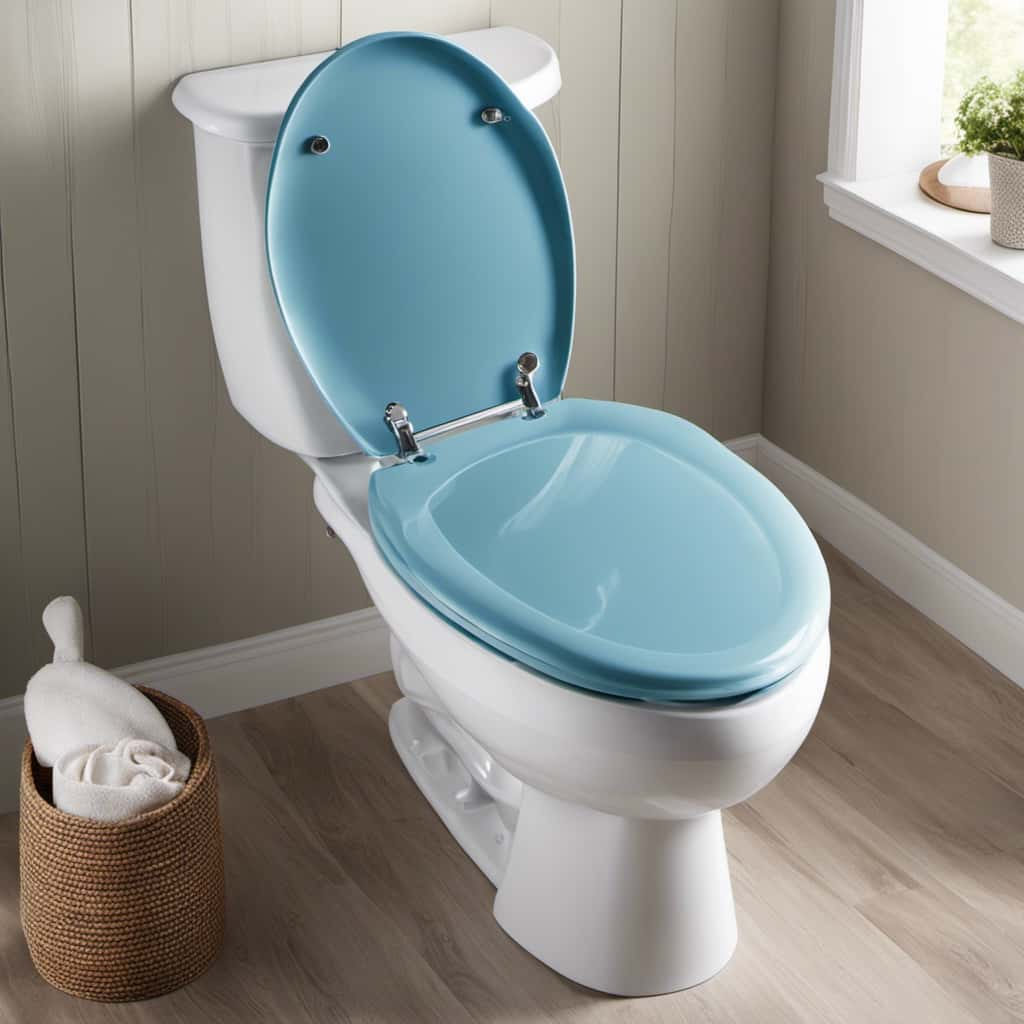
From plungers to homemade drain cleaners, we’ve covered a range of solutions to help you get your toilet flowing freely again.
And remember, if all else fails, don’t hesitate to call in the professionals. You’ll be flushing away your worries in no time!
With an impeccable eye for detail and a passion for bathroom-related, Ava leads our editorial team gracefully and precisely.
Under her guidance, Best Modern Toilet has flourished as the go-to resource for modern bathroom enthusiasts. In her free time, you might find Ava exploring antique shops and looking for vintage bathroom fixtures to add to her collection.
FAQ - Advanced Bathroom Queries
How Do You Flush a Touchless Toilet
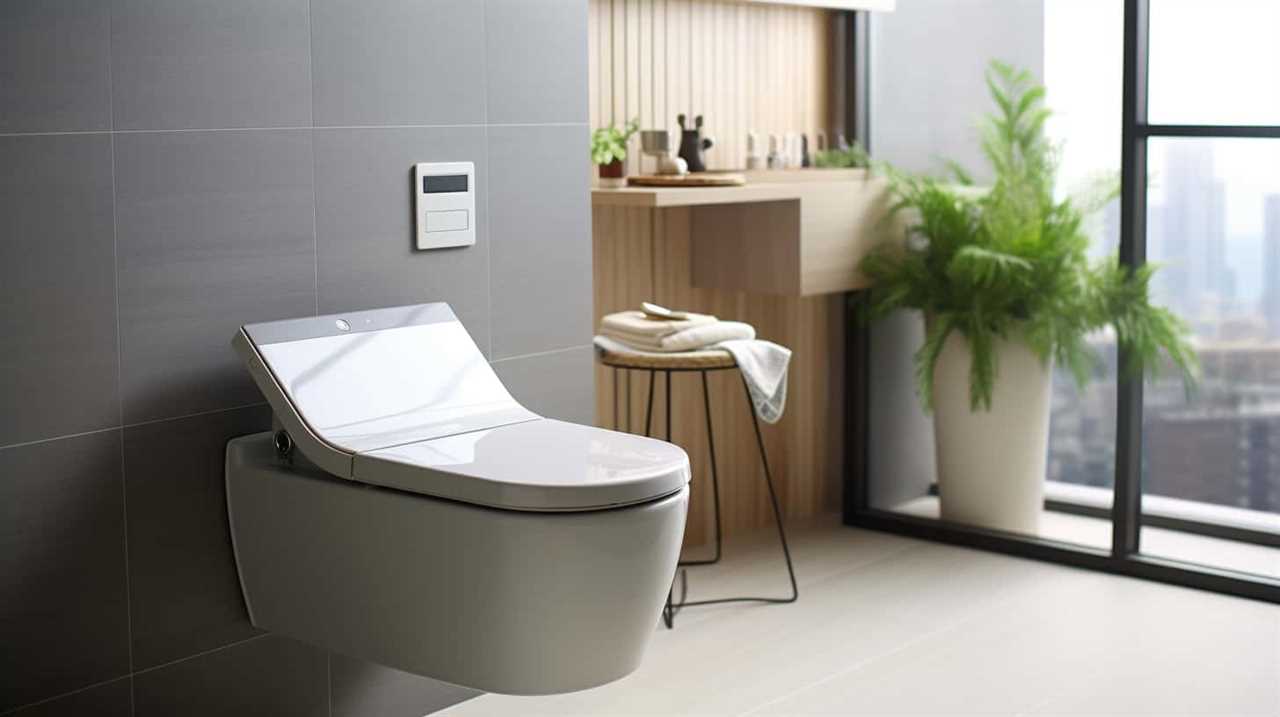
Everyone has come across hands-free toilets in public bathrooms, but have you considered the mechanics behind their operation? This piece will explore the intriguing technology that powers touchless flushing and reveal how the flush sensor is triggered.
We’ll also explore the benefits of touchless toilets and compare them to traditional ones. Whether you’re considering installing a touchless toilet in your bathroom or simply curious about this innovative system, we’ve got you covered with all the information you need.
Key Takeaways
- Touchless toilets utilize a motion sensor to automatically flush when a person is near.
- They reduce the risk of spreading germs and bacteria by eliminating the need to touch handles or buttons.
- Touchless flushing conserves water by accurately detecting user presence and only activating when necessary.
- Proper sensor placement, sensitivity adjustment, and regular cleaning and maintenance are important for optimal functionality.
Understanding Touchless Toilets
We have found that touchless toilets utilize a motion sensor to detect when a person is near and automatically flushes, eliminating the need for physical contact with the flush handle. This sensor installation is a crucial component of touchless toilet features. The sensor is typically located on the top or front of the toilet, and it works by emitting infrared light that reflects off objects in its range. When someone approaches the toilet, the sensor detects the reflected light and sends a signal to the flushing mechanism, triggering the flush.
One of the key advantages of touchless toilets is their hygienic nature. By eliminating the need to touch the flush handle, they help reduce the risk of spreading germs and bacteria. Additionally, touchless toilets are user-friendly and convenient, as they automatically flush without any effort from the user.

To install a touchless toilet sensor, you’ll typically need to follow the manufacturer’s instructions. The sensor often comes with adhesive backing or mounting brackets for easy installation on the toilet tank or wall. Some touchless toilets also come with adjustable sensor settings, allowing users to customize the sensor’s sensitivity and range.
With a solid understanding of touchless toilet features and sensor installation, let’s delve into the technology behind touchless flushing.
The Technology Behind Touchless Flushing
When it comes to touchless flushing, the technology behind it’s quite fascinating. The sensor-based flushing mechanism is at the heart of this innovation, allowing the toilet to detect when to flush without any physical contact.
This not only provides a hygienic solution for users but also contributes to energy efficiency by only using water when needed.
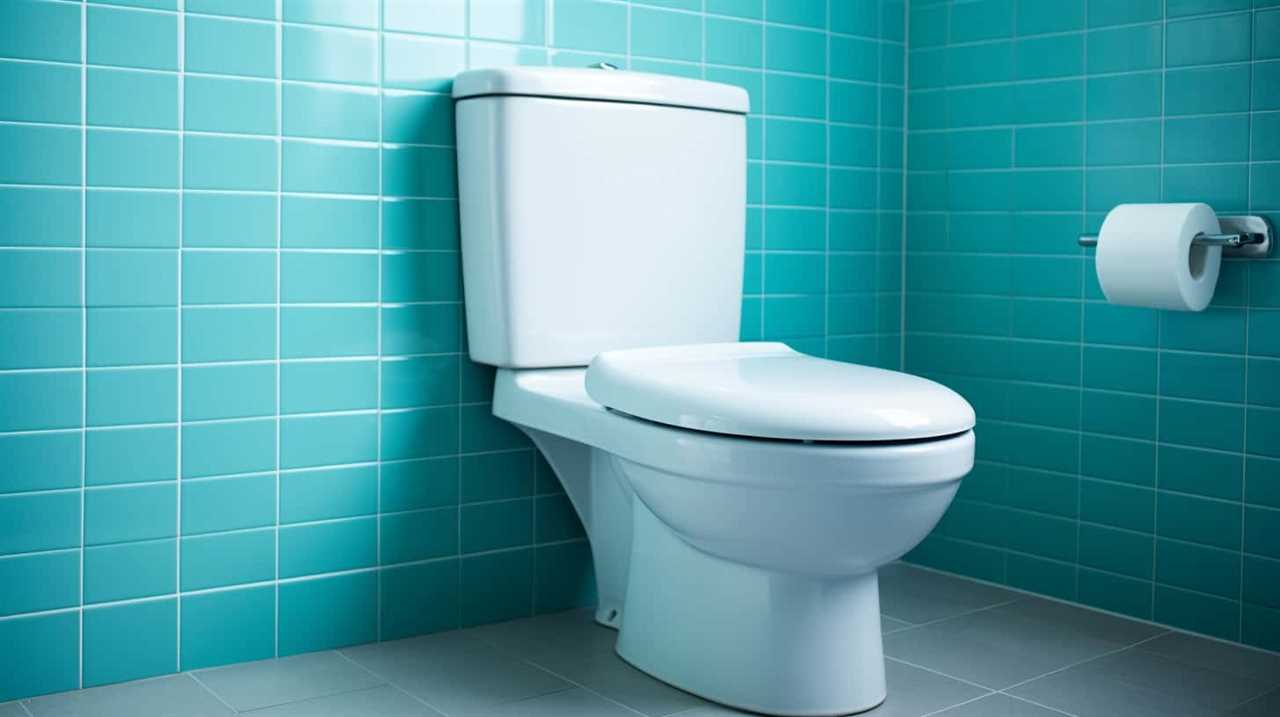
Sensor-Based Flushing Mechanism
Using a sensor-based flushing mechanism is a convenient and hygienic way to activate the flush of a touchless toilet. The sensor detects the presence of a user and triggers the flushing mechanism automatically, eliminating the need for physical contact.
This technology offers several benefits. Firstly, it promotes improved hygiene by minimizing the transfer of germs and bacteria. Users don’t need to touch any buttons or handles, reducing the risk of cross-contamination.
Secondly, sensor-based flushing mechanisms require less maintenance compared to traditional toilets. Since there are no buttons or handles to be touched, there’s less wear and tear.
However, it’s important to ensure regular sensor maintenance to ensure proper functionality. Cleaning the sensor periodically with a soft cloth and non-abrasive cleaner can help maintain its accuracy and effectiveness.
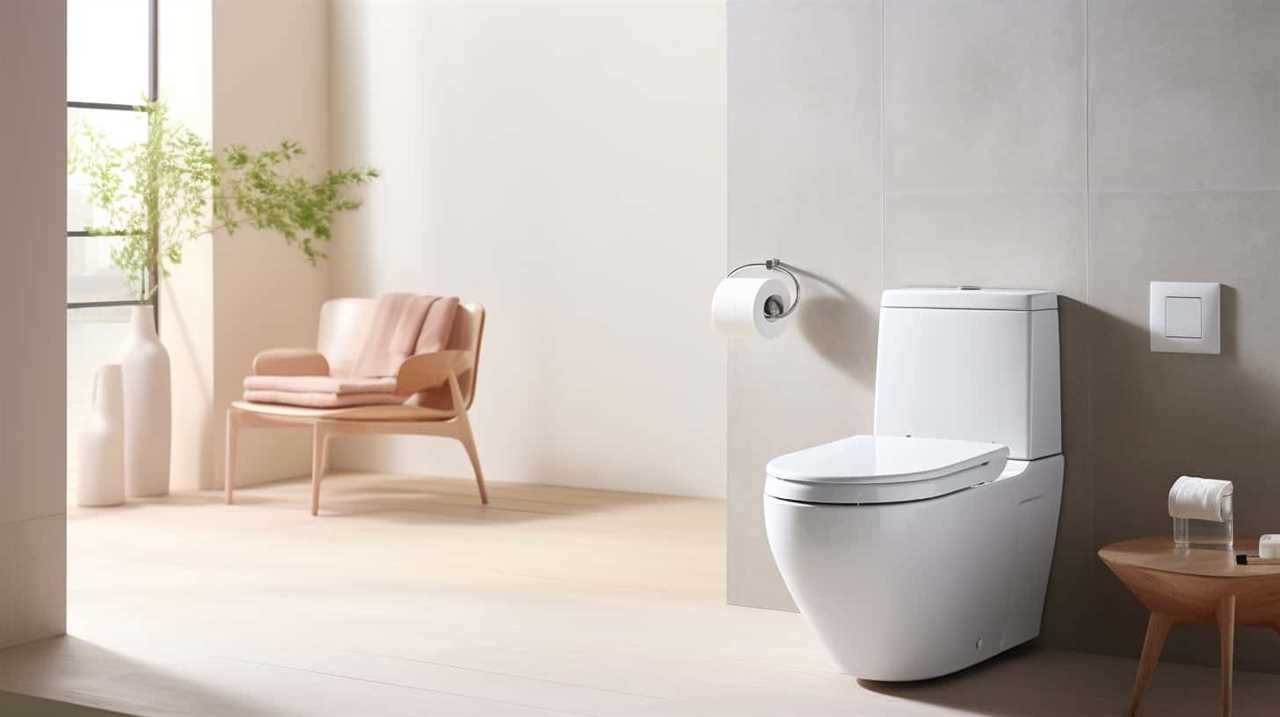
Hygienic Benefits of Touchless Toilets
Touchless toilets offer numerous hygienic benefits due to their innovative flushing technology. Here are three reasons why touchless toilets are a hygienic option for your bathroom:
- Reduced contact with germs: With touchless toilets, you don’t need to touch any handles or buttons, which means you minimize the risk of coming into contact with germs and bacteria that may be present on these surfaces.
- Automatic flushing: Touchless toilets have sensors that detect when you’re finished using the toilet and automatically flushes without the need for manual intervention. This eliminates the need to touch the flush handle, further reducing the spread of germs.
- Easy to clean: Touchless toilets are designed to be easy to clean and maintain. With fewer crevices and no flush handles or buttons, cleaning becomes simpler, reducing the chances of dirt and bacteria buildup.
In order to fully enjoy these hygienic benefits, proper touchless toilet installation and routine maintenance are essential.
Transitioning from the hygienic benefits, let’s now explore the energy efficiency of touchless flushing.
Energy Efficiency of Touchless Flushing
As we explore the energy efficiency of touchless flushing, it is important to understand the technology behind this innovative system. Touchless flushing toilets are equipped with sensors that accurately detect the presence of a user and trigger the flushing mechanism. These sensors use infrared technology to detect the heat emitted by a person’s body. Once the user moves away from the toilet, the sensor sends a signal to the flushing mechanism, which then activates to flush the waste away. This technology not only provides a hygienic and convenient experience, but also contributes to water conservation. By accurately detecting the user’s presence, touchless flushing toilets eliminate the need for manual flushing, reducing the risk of accidental flushes and conserving water.
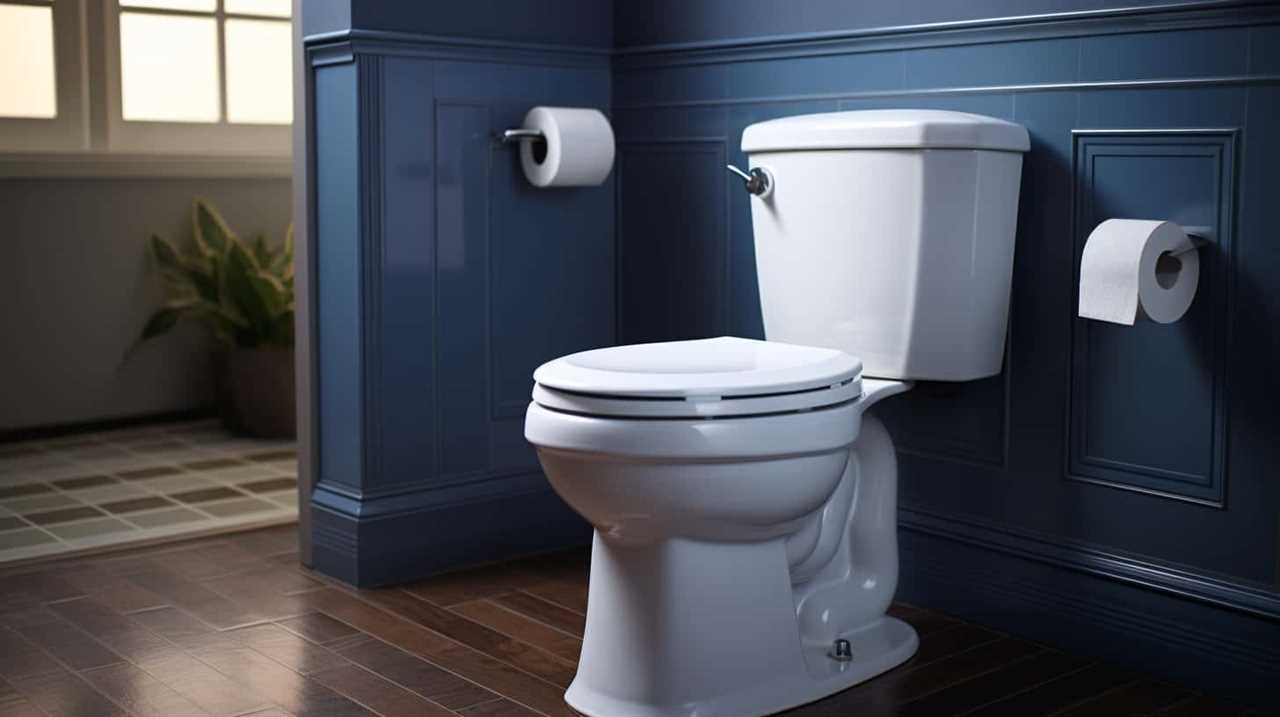
| Advantages of Touchless Flushing | Sensor Accuracy | Water Conservation |
|---|---|---|
| Hygienic | Sensors accurately detect the user and trigger the flushing mechanism. | Eliminates the need for manual flushing, reducing water usage. |
| Convenient | Users can flush without touching any surfaces, reducing the risk of cross-contamination. | Reduces accidental flushes, conserving water in the process. |
| Efficient | The flushing mechanism activates only when necessary, saving water. | Contributes to water conservation efforts by reducing overall water consumption. |
Locating the Flush Sensor
Now let’s talk about the important task of locating the flush sensor on a touchless toilet.
Proper sensor placement is crucial for the toilet to function effectively.
We’ll provide some tips on where to position the sensor and how to troubleshoot any sensor-related issues that may arise.
Sensor Placement Tips
To locate the flush sensor on a touchless toilet, we need to consider the placement of the sensor. Proper sensor placement is crucial for maximizing the performance and efficiency of the touchless toilet system. Here are three important tips to optimize sensor performance:

- Position the sensor at an optimal height: Mount the sensor at a height that ensures it can detect hand movements easily, without the need for excessive arm movements. Generally, a height of 20 to 25 inches from the floor is recommended.
- Avoid direct sunlight or bright lights: Placing the sensor in direct sunlight or near bright lights can interfere with its ability to accurately detect hand movements. Ensure the sensor is installed in an area with adequate lighting, but away from direct light sources.
- Avoid obstacles and reflections: Place the sensor away from any obstacles or reflective surfaces that may interfere with its detection capabilities. This includes mirrors, shiny tiles, or nearby objects that could cause false readings.
Troubleshooting Sensor Issues
After considering the placement tips for optimizing sensor performance, we can now troubleshoot any issues related to locating the flush sensor on a touchless toilet. One common problem could be sensor calibration. If the flush sensor is not properly calibrated, it may not detect your hand movement accurately, leading to inconsistent flushing. To address this, refer to the manufacturer’s instructions to recalibrate the sensor or contact their customer support for assistance.
Another potential issue could be related to water pressure. If the water pressure is too low, the sensor may struggle to detect your hand movement and initiate the flushing mechanism. Conversely, if the water pressure is too high, it could trigger false flushes or cause the sensor to malfunction. Check the water pressure in your plumbing system and adjust it accordingly to ensure optimal sensor performance.
Below is a table summarizing the troubleshooting steps for locating the flush sensor:
| Issue | Possible Solution |
|---|---|
| Sensor Calibration | Refer to manufacturer’s instructions for recalibration |
| Contact customer support for assistance if needed | |
| Troubleshooting Water Pressure | Check water pressure in plumbing system |
| Adjust water pressure to ensure optimal sensor performance |
How to Activate the Flush Sensor
To activate the flush sensor, we simply wave our hand in front of it. The flush sensor is designed to detect motion and initiate the flushing process.
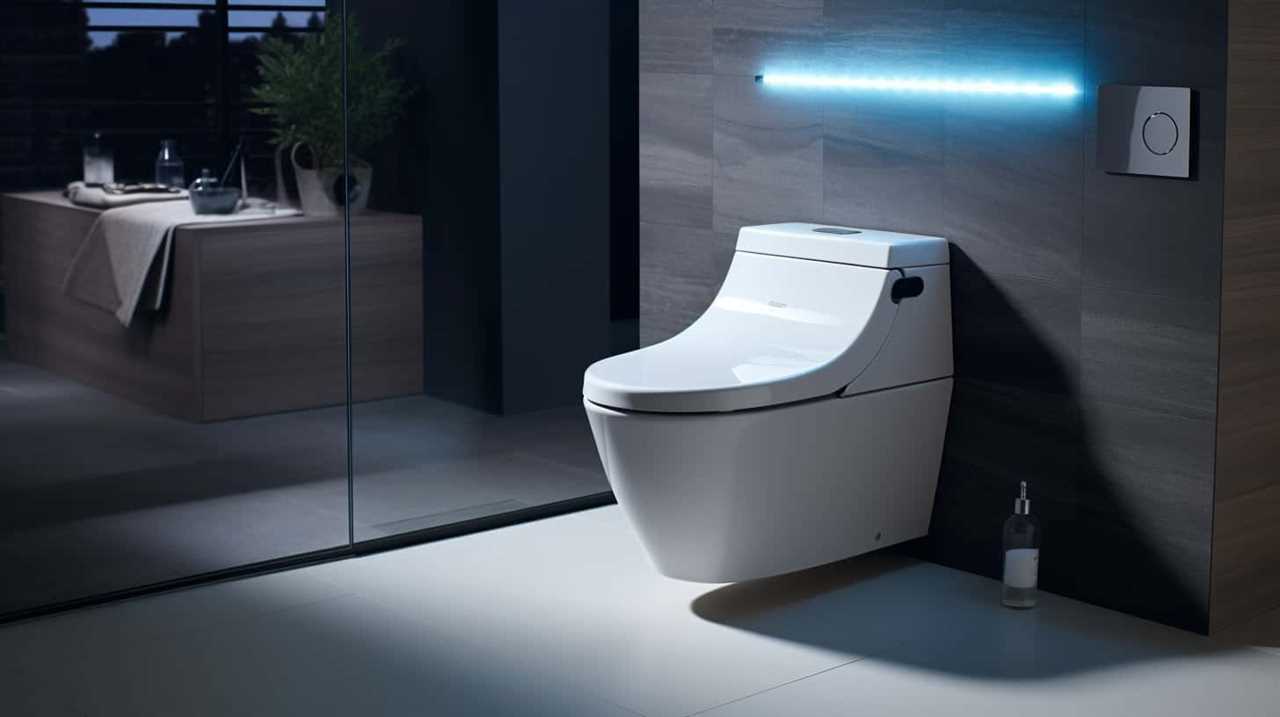
Here are three important things to know about activating the flush sensor:
- Proper hand placement: Ensure that your hand is within the sensor’s range, typically indicated by a marked area on the toilet or sensor itself. Position your hand about 2-3 inches away from the sensor for optimal detection.
- Gesture recognition: The flush sensor is programmed to recognize specific hand gestures, such as a wave or swipe. Make sure to perform the recognized gesture consistently and clearly in front of the sensor to activate the flush.
- Sensor sensitivity: In some cases, the flush sensor’s sensitivity may need to be adjusted. If you find that the sensor isn’t detecting your hand motion, consult the toilet’s user manual for instructions on adjusting the sensor sensitivity. This can usually be done by accessing the control panel or settings on the toilet.
Adjusting the Sensor Sensitivity
Now let’s delve into how we can adjust the sensor sensitivity on our touchless toilet. Adjusting the sensitivity levels of the sensor is crucial for ensuring optimal performance and avoiding any sensitivity issues. If the sensor is too sensitive, it may activate the flush even when you aren’t intending to use it. On the other hand, if the sensor isn’t sensitive enough, it may fail to detect your presence and the flush won’t be activated.
To adjust the sensor sensitivity, locate the adjustment dial or button on the control panel of your touchless toilet. This dial or button allows you to increase or decrease the sensitivity levels. Start by setting the sensor to its default sensitivity level, if available. If you’re experiencing sensitivity issues, try adjusting the sensitivity level gradually, making small changes at a time. Test the flush after each adjustment to determine if the sensitivity is now at an optimal level.
If you’re still facing sensitivity issues after adjusting the sensitivity levels, there may be other factors causing the problem. Ensure that the sensor is clean and free from any dirt or debris that could be obstructing its functionality. Additionally, check for any obstructions in the toilet area that may be interfering with the sensor’s detection capabilities.

Proper Hand Placement for Flushing
To ensure a successful flush, we need to place our hands correctly on the touchless toilet’s sensor. Proper hand placement is essential for activating the flushing mechanism and making the most of the touchless technology. Here are three key points to consider:
- Position your hands within the sensor range: The touchless toilet’s sensor is designed to detect motion within a specific range. To activate the flushing mechanism, place your hands within this range, usually indicated by a marked area on the sensor. Keep your hands steady and avoid abrupt movements to ensure accurate detection.
- Maintain a consistent distance: Consistency is key when it comes to hand placement. Keep your hands at a consistent distance from the sensor throughout the flushing process. This helps maintain a steady connection with the touchless technology and ensures a reliable flush every time.
- Avoid covering the sensor: Ensure that your hands don’t obstruct or cover the sensor. Obstructions can interfere with the touchless technology’s ability to detect motion and may result in an unsuccessful flush. Keep your hands slightly elevated above the sensor, allowing for unobstructed detection.
The Importance of a Clean Sensor
As we continue to explore the proper hand placement for flushing a touchless toilet, it’s crucial to emphasize the importance of keeping the sensor clean. Maintaining a clean sensor is essential for the optimal performance of the touchless toilet system. The sensor is responsible for detecting movement and triggering the flush mechanism, so any dirt or debris on the sensor can interfere with its functionality. To ensure a clean sensor, it’s recommended to use appropriate cleaning techniques and regularly perform sensor maintenance.
When it comes to cleaning the sensor, it’s important to use gentle cleaning methods to avoid damaging the sensitive components. Start by using a soft cloth or sponge dampened with a mild cleaning solution to wipe the surface of the sensor. Avoid using abrasive or harsh chemicals, as they can damage the sensor. Pay special attention to the area around the sensor, as dirt or grime buildup can impede its effectiveness.
In addition to regular cleaning, sensor maintenance is also crucial. Check the sensor periodically for any signs of wear or damage. If you notice any issues, such as a slow or unresponsive flush, it may be necessary to replace the sensor or contact a professional for assistance. By implementing these cleaning techniques and performing regular sensor maintenance, you can ensure the optimal performance of your touchless toilet system.
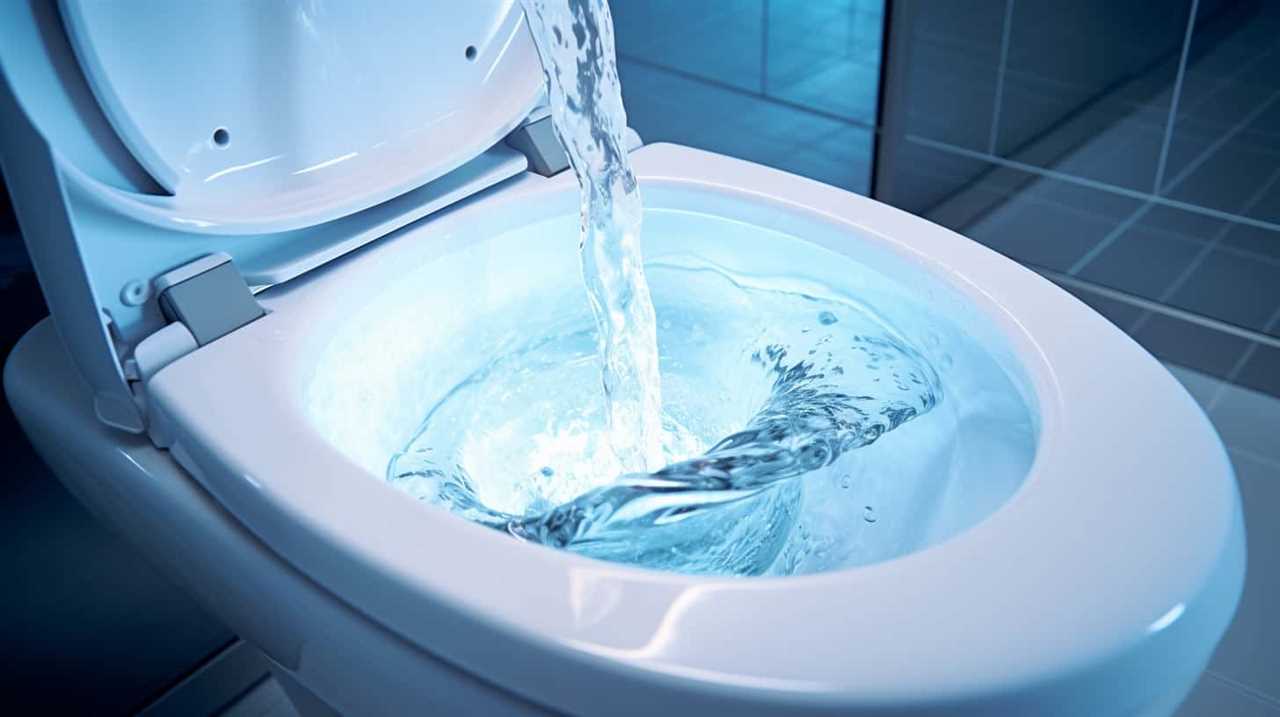
With a clean sensor, you can expect a reliable and efficient flushing experience. However, if you encounter any issues despite maintaining a clean sensor, it may be necessary to troubleshoot common sensor issues. Let’s now explore some common problems that may arise and the steps to resolve them.
Troubleshooting Common Sensor Issues
When it comes to touchless toilets, one common issue that users may encounter is the sensor not detecting correctly, resulting in the toilet not flushing. This can be frustrating, as it defeats the purpose of a touchless system.
In order to troubleshoot this problem, it’s important to understand the possible causes and solutions for a malfunctioning sensor.
Sensor Not Detecting Correctly
We often encounter issues with the sensor not picking up movement accurately, which can prevent the touchless toilet from flushing properly. To address this problem, here are three troubleshooting techniques you can try:
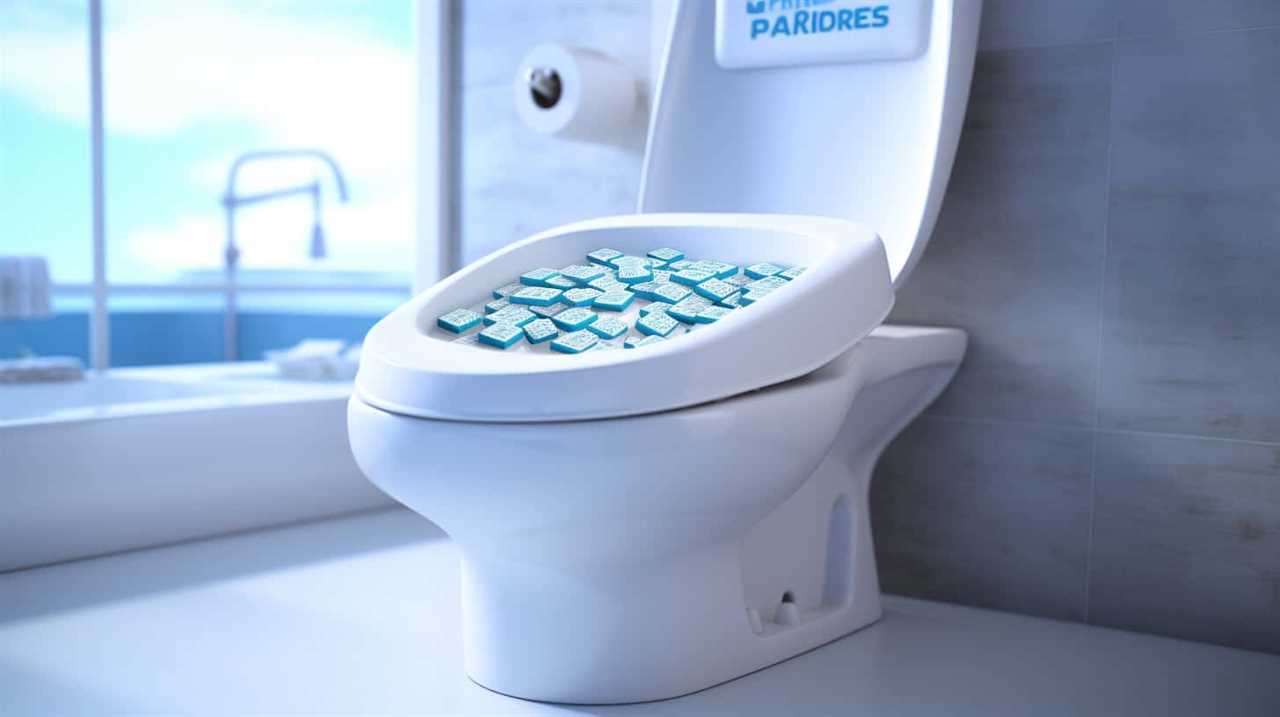
- Check for sensor calibration: Ensure that the sensor is properly calibrated by referring to the manufacturer’s instructions. Calibration may involve adjusting the sensor sensitivity or range to optimize its performance.
- Clean the sensor area: Dust, dirt, or other debris on the sensor can interfere with its detection capabilities. Gently clean the sensor and the surrounding area using a soft cloth or a mild cleaning solution. Avoid using abrasive materials that could damage the sensor.
- Remove any obstructions: Objects or obstacles near the sensor can obstruct its view and prevent accurate detection. Make sure there are no items blocking the sensor’s line of sight. Clear any potential obstructions to allow the sensor to function correctly.
Toilet Not Flushing
To address the issue of a touchless toilet not flushing properly, let’s troubleshoot common sensor issues that may be causing the problem.
When a touchless toilet fails to flush, it could be due to a few common problems with the sensor. First, check if the sensor is obstructed by any dirt or debris. Clean it gently with a soft cloth to ensure it can detect motion accurately.
Another possible issue is low battery power. Replace the batteries if they’re running low.
Additionally, ensure that the sensor is properly aligned with the flushing mechanism. If it’s misaligned, adjust it to ensure proper operation.
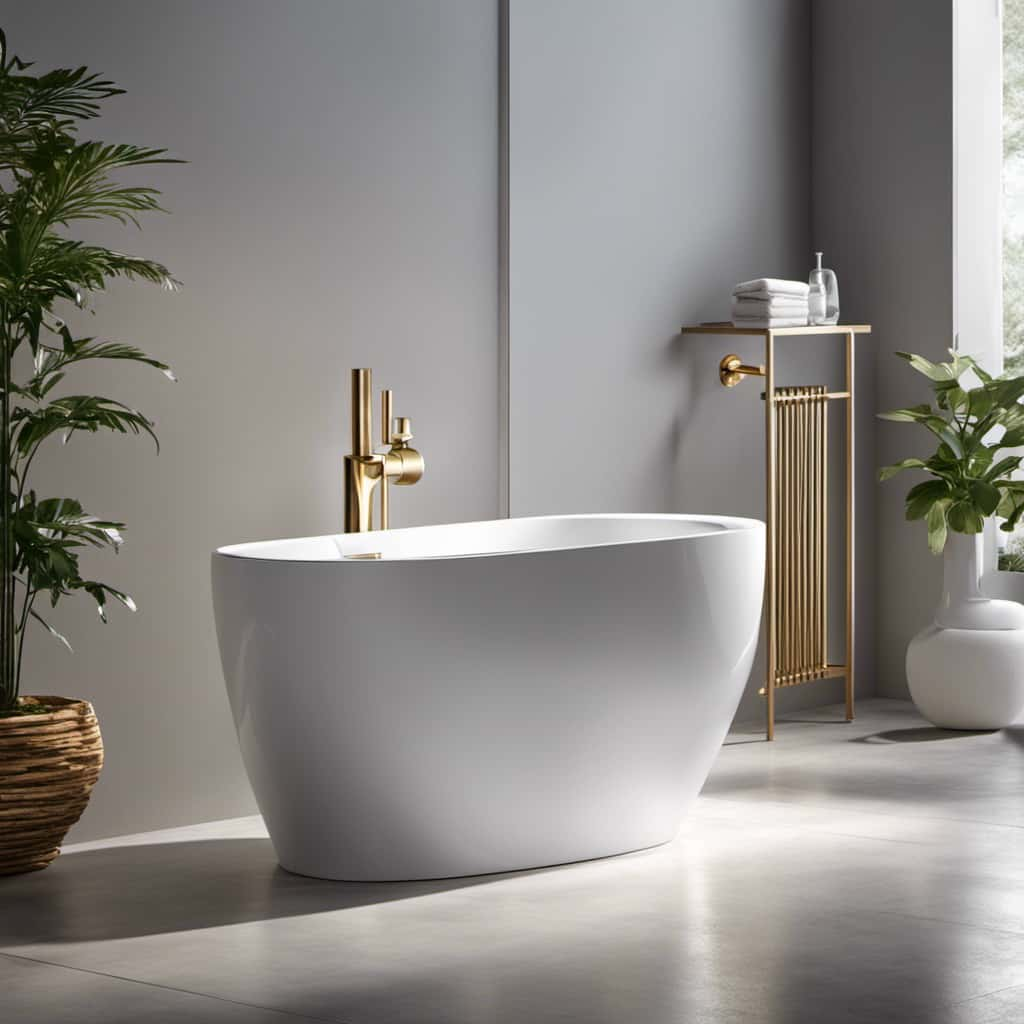
Using Manual Override Options
Occasionally, we may need to utilize the manual override options to flush a touchless toilet. These features are designed to help us overcome any issues that may arise with the automated flushing mechanism.
Here are some troubleshooting tips to help you effectively use the manual override options:
- Locate the manual override button or lever: Different touchless toilets have different manual override features. It could be a small button located near the flush sensor or a lever on the side of the toilet. Familiarize yourself with the specific location of the manual override feature on your toilet.
- Press or pull the manual override: Once you have located the manual override button or lever, press or pull it firmly to activate the flushing mechanism. Be sure to apply enough pressure to ensure a successful flush.
- Repeat if necessary: In some cases, a single press or pull of the manual override may not be enough to flush the toilet completely. If this happens, repeat the action until the toilet flushes completely.
Maintaining a Touchless Toilet
When it comes to maintaining a touchless toilet, there are a few key points to keep in mind.
Firstly, regular cleaning of the touchless sensors is crucial to ensure proper functioning.

Additionally, it’s important to take steps to prevent water leaks, such as checking for loose connections and ensuring the toilet is properly sealed.
Lastly, being aware of common issues and troubleshooting them promptly can help to avoid any major problems.
Cleaning Touchless Sensors
We regularly clean the touchless sensors to maintain the functionality of our touchless toilet. Cleaning the sensors is essential to ensure accurate detection and reliable flushing. Here are three important steps to follow for cleaning touchless sensors:
- Gently wipe the sensors with a soft, lint-free cloth: Use a non-abrasive cloth to wipe away any dirt, dust, or fingerprints that may have accumulated on the sensors. Avoid using harsh chemicals or abrasive materials, as they can damage the sensors.
- Use a mild cleaning solution: In case the sensors are heavily soiled, you can use a mild cleaning solution specifically designed for touchless sensors. Ensure that the solution is compatible with the sensor’s material and follow the manufacturer’s instructions for proper usage.
- Regularly inspect and troubleshoot sensor issues: Check the sensors regularly for any signs of damage or malfunction. If the sensors aren’t working properly, try replacing the batteries or contacting the manufacturer for further assistance.
By regularly cleaning and maintaining the touchless sensors, you can ensure optimal performance and prevent sensor-related issues.
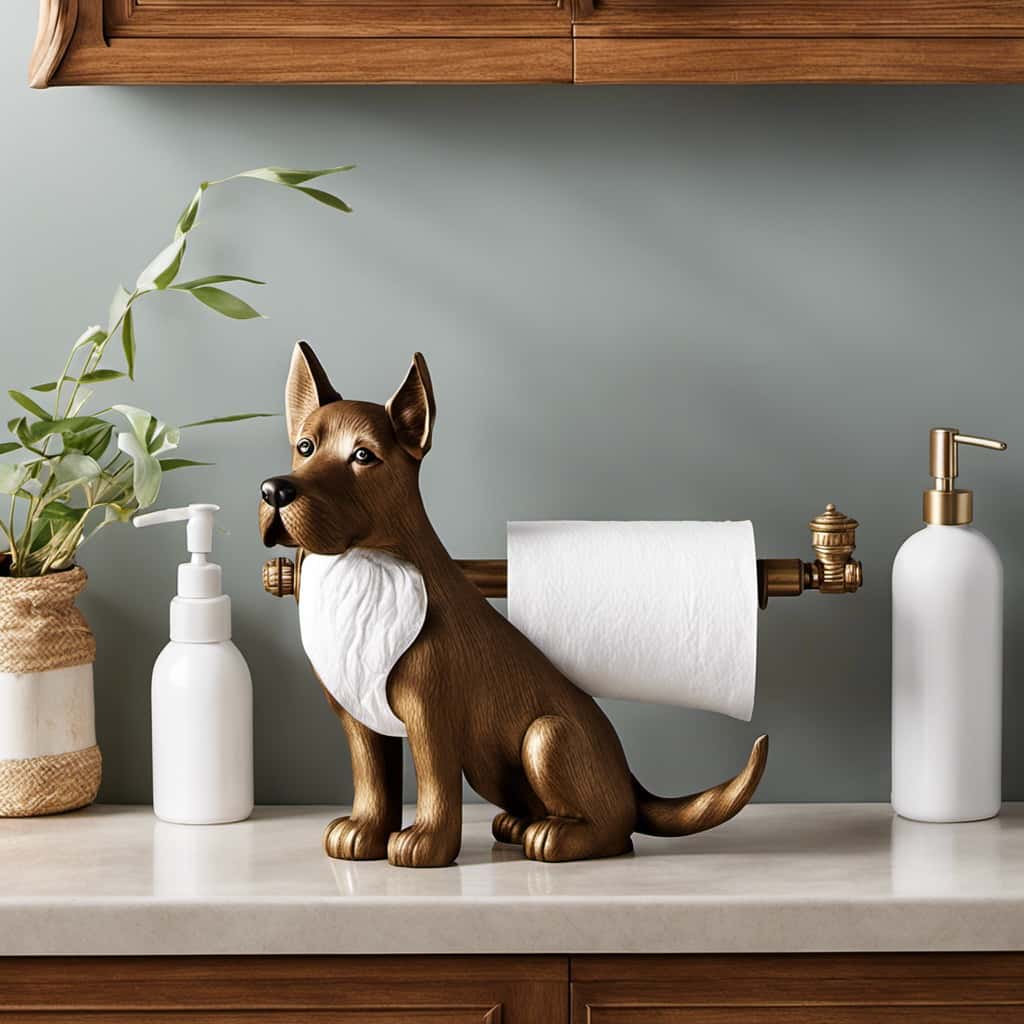
Now, let’s move on to the next section about preventing water leaks.
Preventing Water Leaks
To maintain a touchless toilet and prevent water leaks, regular inspection and maintenance of the flush valve is crucial. The flush valve is responsible for regulating the water flow and ensuring a proper flush. Over time, debris and mineral buildup can affect the valve’s performance, leading to leaks.
To prevent water leaks, it’s important to troubleshoot common issues. Firstly, check for any visible signs of water leakage around the toilet base or on the floor. If present, it could indicate a faulty seal or loose connections.
Secondly, listen for any hissing or running water sounds, which may suggest a leaky flapper valve.
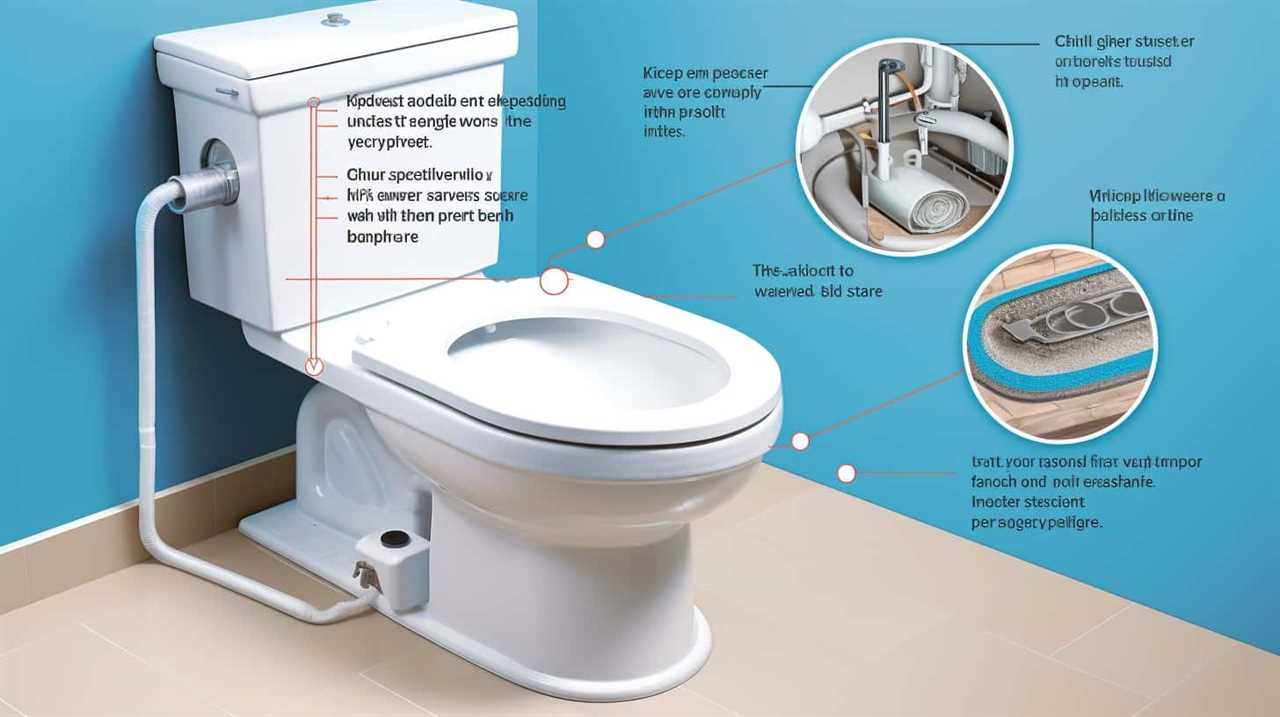
Lastly, inspect the water supply line for any cracks or damage. By addressing these issues promptly, you can prevent water leaks and maintain the efficiency of your touchless toilet.
Troubleshooting Common Issues
To ensure the proper functioning of our touchless toilet, regular maintenance and troubleshooting are essential. Here are three common issues that may arise with touchless toilets and how to troubleshoot them:
- Troubleshooting Sensor Calibration: If the touchless toilet isn’t flushing consistently or is flushing when no one is present, the sensor calibration may be off. To troubleshoot, try cleaning the sensor with a soft cloth and mild soap. If that doesn’t work, consult the manufacturer’s instructions for recalibrating the sensor.
- Troubleshooting Flush Delay: If there’s a delay between when the sensor is activated and when the toilet flushes, there may be an issue with the flush delay settings. Check the user manual for instructions on adjusting the flush delay. If the problem persists, contact a professional plumber for further assistance.
- Additional Troubleshooting: If the touchless toilet is still not functioning properly after troubleshooting the sensor calibration and flush delay, there may be a more complex issue at hand. In this case, it’s recommended to contact a qualified plumber or the manufacturer’s customer service for assistance.
Cleaning and Disinfecting the Flush Sensor
To properly clean and disinfect the flush sensor of a touchless toilet, it’s important to follow a few simple steps using the appropriate cleaning solution. The flush sensor, which detects motion and triggers the flush, can accumulate dirt and germs over time. To maintain optimal hygiene and functionality, it’s recommended to clean the flush sensor regularly.
The cleaning frequency for the flush sensor depends on the usage and environment. In high-traffic areas, it may be necessary to clean the sensor more frequently to prevent buildup. A general guideline is to clean the flush sensor at least once a week to ensure its proper functioning.
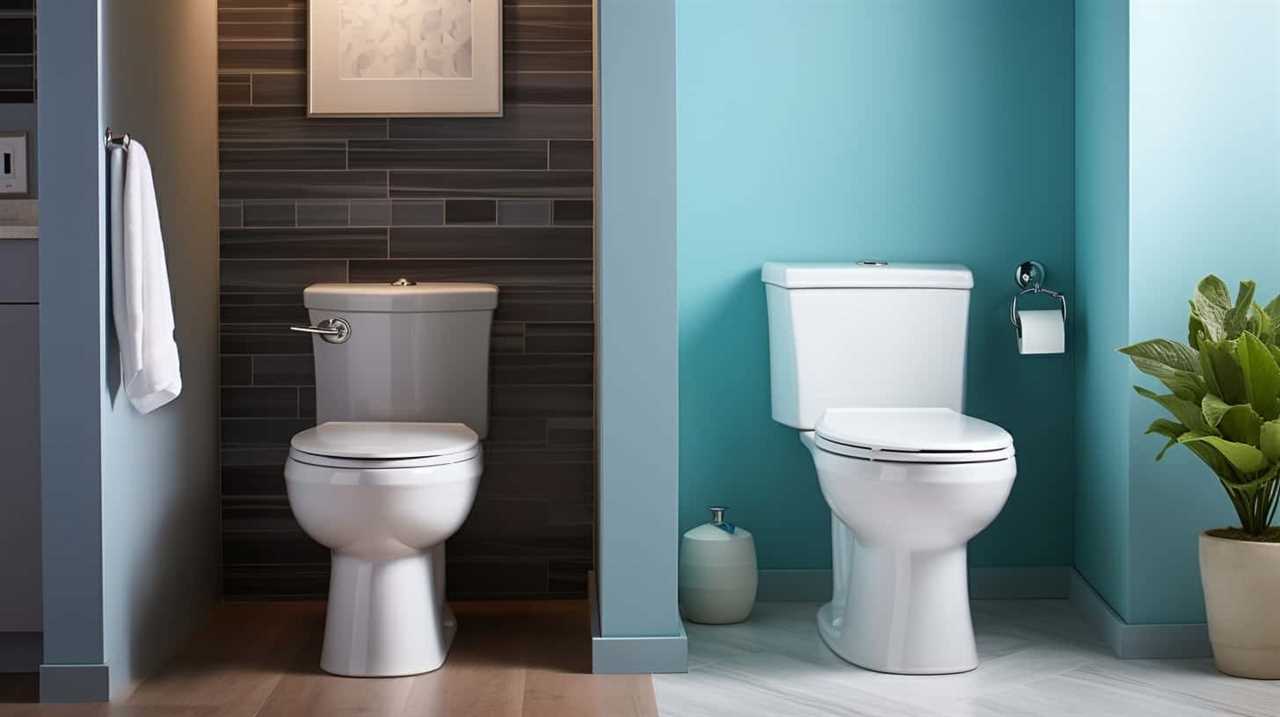
When it comes to choosing the cleaning products, it’s crucial to use solutions that are safe for the sensor and effective in removing dirt and germs. Avoid using abrasive cleaners or those containing bleach, as they can damage the sensor. Instead, opt for mild, non-abrasive cleaners specifically designed for touchless toilets. These cleaners are formulated to effectively clean and disinfect the sensor without causing any harm.
To clean the flush sensor, start by turning off the power source to avoid accidental activation. Then, apply the cleaning solution to a soft cloth or sponge and gently wipe the sensor surface, taking care not to press too hard. Finally, rinse the sensor with clean water and dry it thoroughly.
Benefits of Touchless Flushing
Using touchless flushing in our bathrooms offers numerous advantages. Here are three reasons why touchless toilets are a game-changer:
- Improved hygiene: Touchless flushing technology eliminates the need to physically touch the toilet flush handle, reducing the spread of germs and bacteria. This is particularly beneficial in public restrooms where many people come into contact with the same surfaces. By simply waving a hand in front of the sensor, the toilet flushes automatically, ensuring a more sanitary experience.
- Convenience and ease of use: With touchless toilets, there’s no need to struggle with a handle or button. The convenience of touchless flushing allows for a seamless and effortless experience. Whether you have limited mobility or simply want to avoid touching potentially dirty surfaces, touchless flushing technology provides an efficient and user-friendly solution.
- Water conservation: Touchless toilets are designed to be water-efficient. The sensors detect when someone is using the toilet and adjust the water flow accordingly, minimizing unnecessary water usage. This not only helps to preserve water resources but also reduces water bills, making touchless toilets an environmentally friendly and cost-effective choice.
By embracing touchless flushing technology, we can enjoy improved hygiene, convenience, and water conservation in our bathrooms.
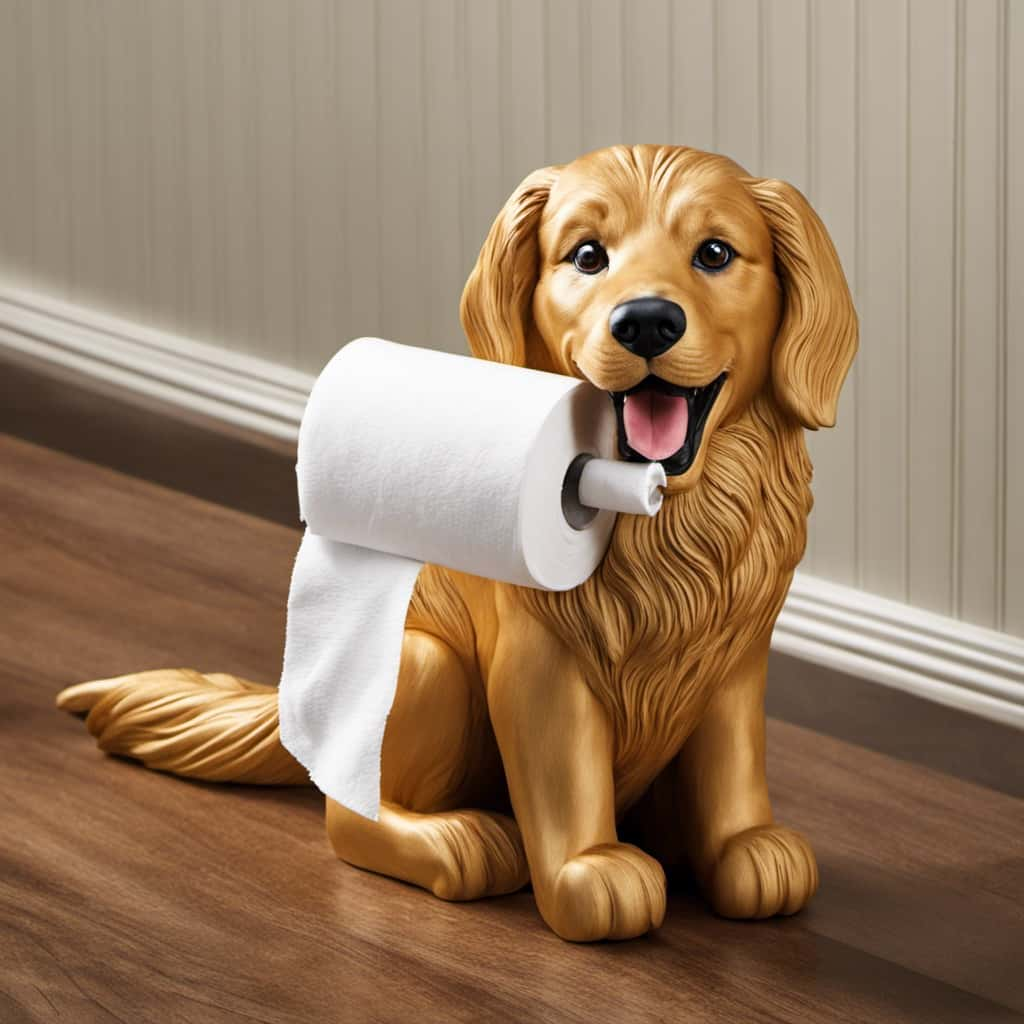
Now, let’s dive into comparing touchless toilets to traditional toilets and explore the differences between these two flushing options.
Comparing Touchless Toilets to Traditional Toilets
Touchless toilets offer several advantages over traditional toilets, making them a superior choice for modern bathrooms. When comparing touchless toilets to traditional toilets, there are a few key differences that set them apart.
One major advantage of touchless toilets is the hygienic benefits they provide, especially in public restrooms. Traditional toilets require users to touch the flush handle, which can harbor germs and spread bacteria. In contrast, touchless toilets use sensor technology to automatically flush, eliminating the need for physical contact and reducing the risk of cross-contamination.
Another benefit of touchless toilets is their water-saving capabilities. Traditional toilets typically use a set amount of water per flush, regardless of the waste volume. Touchless toilets, on the other hand, utilize advanced sensing technology to adjust the water flow based on the waste level, resulting in more efficient water usage and lower water bills.

To further illustrate the differences between touchless toilets and traditional toilets, here is a table highlighting some key features:
| Feature | Touchless Toilets | Traditional Toilets |
|---|---|---|
| Hygiene | No touch required | Touch flush handle |
| Water Efficiency | Adjustable flow | Fixed flow |
| Maintenance | Less prone to clogs | May clog more easily |
| Ease of Use | Automatic flushing | Manual flushing |
| Cost | Higher upfront cost | Lower upfront cost |
Installing a Touchless Toilet in Your Bathroom
When installing a touchless toilet in our bathroom, we need to consider a few important factors:
- Location: Choose a suitable location for the touchless toilet that allows for easy access and functionality. Consider the proximity to the water supply and drain lines to ensure efficient installation.
- Plumbing Requirements: Installing touchless faucets may require modifications to the existing plumbing system. It’s essential to consult a professional plumber to ensure proper installation. They can assess the water pressure, supply lines, and drainage requirements.
- Benefits of Touchless Technology: Touchless toilets offer several advantages, including improved hygiene, convenience, and water efficiency. The hands-free operation minimizes the spread of germs and reduces cross-contamination. Additionally, touchless technology often includes features such as adjustable flush settings and water-saving options, contributing to a more sustainable bathroom.
Frequently Asked Questions About Touchless Toilets
Now let’s address some common queries about touchless toilets.
One frequently asked question is how to troubleshoot touchless toilets. If your touchless toilet isn’t flushing properly, there are a few troubleshooting steps you can take. First, check the batteries in the sensor. Low batteries can cause the sensor to malfunction. Replace the batteries if necessary. Next, ensure that the sensor is clean and free from any obstructions. Dust or debris on the sensor can interfere with its functioning. Clean the sensor with a soft cloth or a mild cleaning solution. If these steps don’t resolve the issue, it might be necessary to call a professional plumber to inspect and repair the touchless toilet.
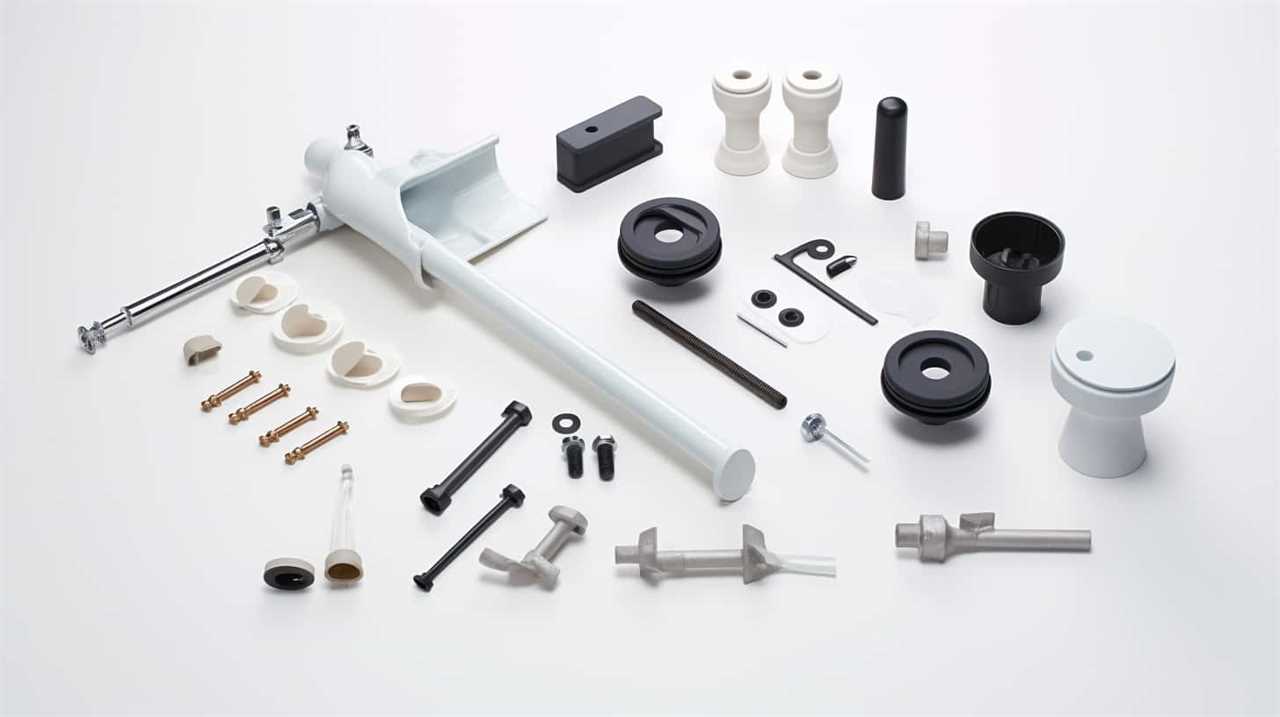
Another common query is about the benefits of touchless technology in toilets. Touchless toilets offer several advantages. Firstly, they eliminate the need for physical contact, reducing the spread of germs and promoting better hygiene. Secondly, touchless toilets are more convenient and user-friendly, especially for children or individuals with limited mobility. They often feature automatic flush mechanisms and sensor-operated lids. Additionally, touchless toilets save water by using efficient flushing mechanisms and offering dual-flush options. This not only helps the environment but also reduces water bills. Overall, touchless toilets provide a hygienic, convenient, and water-saving solution for modern bathrooms.
Frequently Asked Questions
Can I Use a Touchless Toilet if I Have Mobility Issues or Limited Hand Dexterity?
When considering touchless toilet technology, it’s important to consider the benefits for individuals with mobility issues or limited hand dexterity. Using a touchless toilet eliminates the need for physical contact, making it accessible for those who may struggle with traditional flushing mechanisms.
This advanced technology utilizes sensors to detect movement, allowing for a hygienic and convenient flushing experience. By incorporating touchless toilets, individuals with disabilities can enjoy increased independence and ease of use in the bathroom.
How Do Touchless Toilets Help in Preventing the Spread of Germs and Bacteria?
Touchless toilets play a crucial role in preventing the spread of germs and bacteria. By utilizing advanced touchless toilet technology, these toilets eliminate the need for physical contact, reducing the risk of contamination.
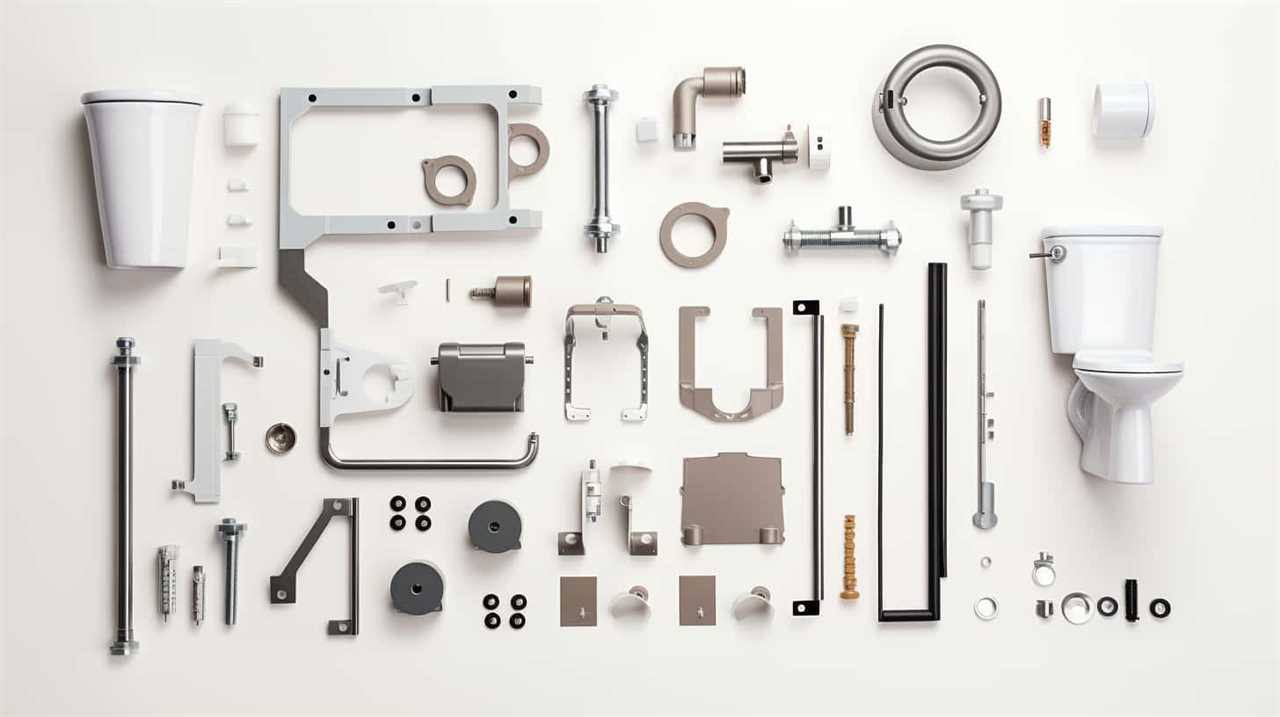
The benefits of touchless toilets extend beyond hygiene, as they also promote convenience and efficiency. With a simple wave or sensor activation, the toilet flushes automatically, ensuring a sanitary and effortless experience.
This innovative solution is particularly beneficial for individuals with mobility issues or limited hand dexterity, providing them with greater independence and improved hygiene.
Are Touchless Toilets More Expensive to Install and Maintain Compared to Traditional Toilets?
Touchless toilet technology offers convenience and helps prevent the spread of germs and bacteria.
As for cost comparison, touchless toilets may be more expensive to install due to the advanced technology involved. However, they can save money in the long run by reducing water consumption.

Maintenance costs may vary depending on the specific model and brand.
It’s important to consider these factors when deciding between a touchless toilet and a traditional one.
Can I Still Manually Flush a Touchless Toilet if the Sensor Malfunctions?
If the sensor on a touchless toilet malfunctions, it’s still possible to manually flush it. Most touchless toilets have a backup manual flush option, usually in the form of a button or lever located near the sensor.
Are Touchless Toilets Suitable for Public Restrooms With High Usage?
Touchless toilets have become increasingly popular in public restrooms due to advancements in touchless toilet technology. These toilets are suitable for high usage environments, as they help reduce the spread of germs and bacteria.

In fact, studies have shown that touchless toilets can reduce water consumption by up to 70% compared to traditional toilets. This makes them not only hygienic, but also environmentally friendly.
The benefits of touchless toilets make them a smart choice for any public restroom.
Conclusion
In conclusion, touchless toilets offer a convenient and hygienic solution for flushing. The advanced technology behind these toilets allows for a hands-free experience, reducing the spread of germs and promoting cleanliness.
By simply locating and activating the flush sensor, you can easily flush the toilet without touching any surfaces. With adjustable sensor sensitivity and numerous benefits, touchless toilets are a modern and efficient choice for any bathroom.
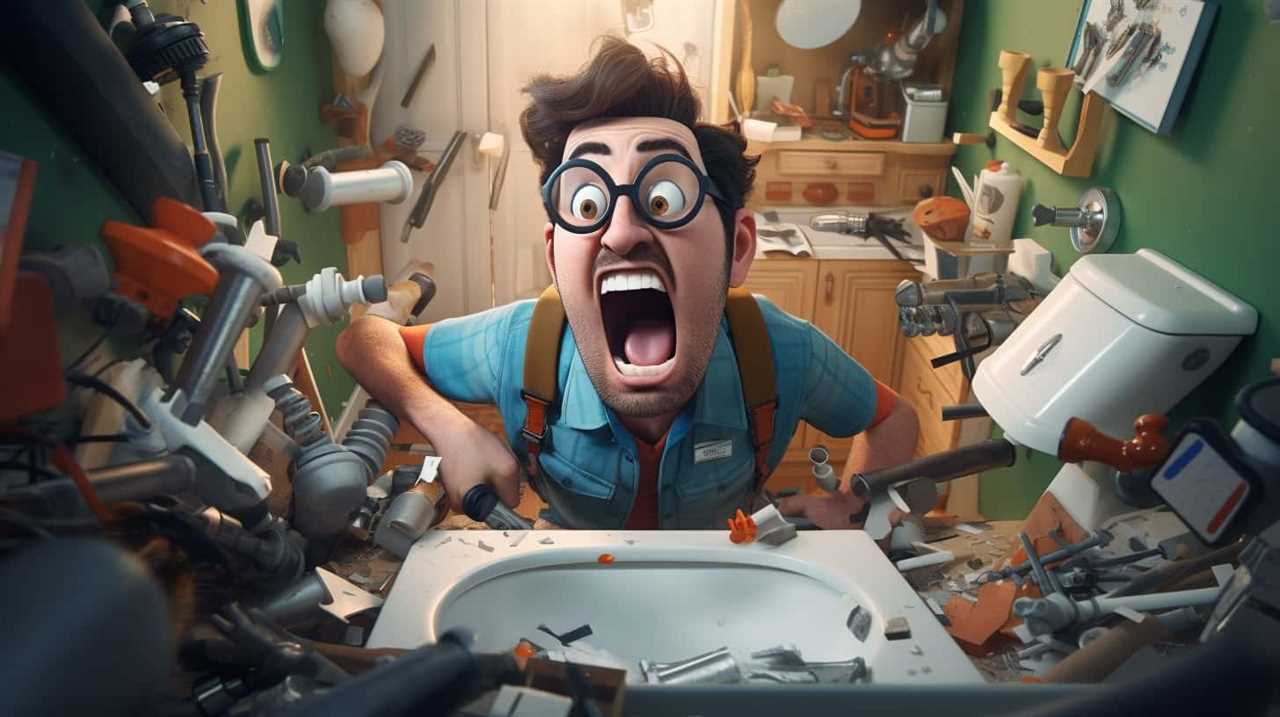
Upgrade your bathroom with a touchless toilet and experience the future of flushing.
With an impeccable eye for detail and a passion for bathroom-related, Ava leads our editorial team gracefully and precisely.
Under her guidance, Best Modern Toilet has flourished as the go-to resource for modern bathroom enthusiasts. In her free time, you might find Ava exploring antique shops and looking for vintage bathroom fixtures to add to her collection.
FAQ - Advanced Bathroom Queries
How Do You Flush Out Your Gum Pockets

Have you ever thought about the best ways to clear out your gum pockets and keep your gums in good health?
In this article, we will explore effective techniques and strategies to keep your oral health in check. From understanding the causes and symptoms of gum pockets to natural remedies and professional treatments, we’ve got you covered.
Join us as we delve into the world of gum care and discover the secrets to achieving gum pocket-free bliss. Let’s embark on this journey towards gum mastery together!
Key Takeaways
- Maintaining good oral hygiene is essential for preventing gum pockets.
- Natural remedies such as tea tree oil, aloe vera, clove oil, and oil pulling can help reduce inflammation and promote healing in gum pockets.
- Professional treatments like deep cleaning, laser therapy, pocket reduction surgery, guided tissue regeneration, and antibiotic therapy may be necessary for severe gum pocket cases.
- Long-term strategies for maintaining healthy gums include proper oral hygiene practices, regular dental check-ups, a healthy diet, avoiding smoking, and addressing any signs or symptoms of gum disease promptly.
Understanding Gum Pockets: Causes and Symptoms
To understand gum pockets, we need to delve into the causes and symptoms that contribute to their development.

Gum disease, also known as periodontal disease, is primarily caused by poor oral hygiene. When plaque and tartar build up on the teeth and along the gumline, bacteria thrive and irritate the gums.
This irritation leads to inflammation, which is one of the first signs of gum pocket development. Other signs include redness, swelling, tenderness, and bleeding of the gums.
If left untreated, gum pockets can deepen, causing further damage to the gums and supporting structures of the teeth. It’s essential to recognize these signs and take prompt action to prevent the progression of gum disease and the formation of gum pockets.
Maintaining Good Oral Hygiene for Gum Pocket Prevention
To maintain good oral hygiene for gum pocket prevention, we need to consistently use a subordinating conjunction. By following a few simple oral hygiene tips, we can greatly reduce the risk of developing gum disease and the formation of gum pockets. Here are some key practices to incorporate into your daily routine:
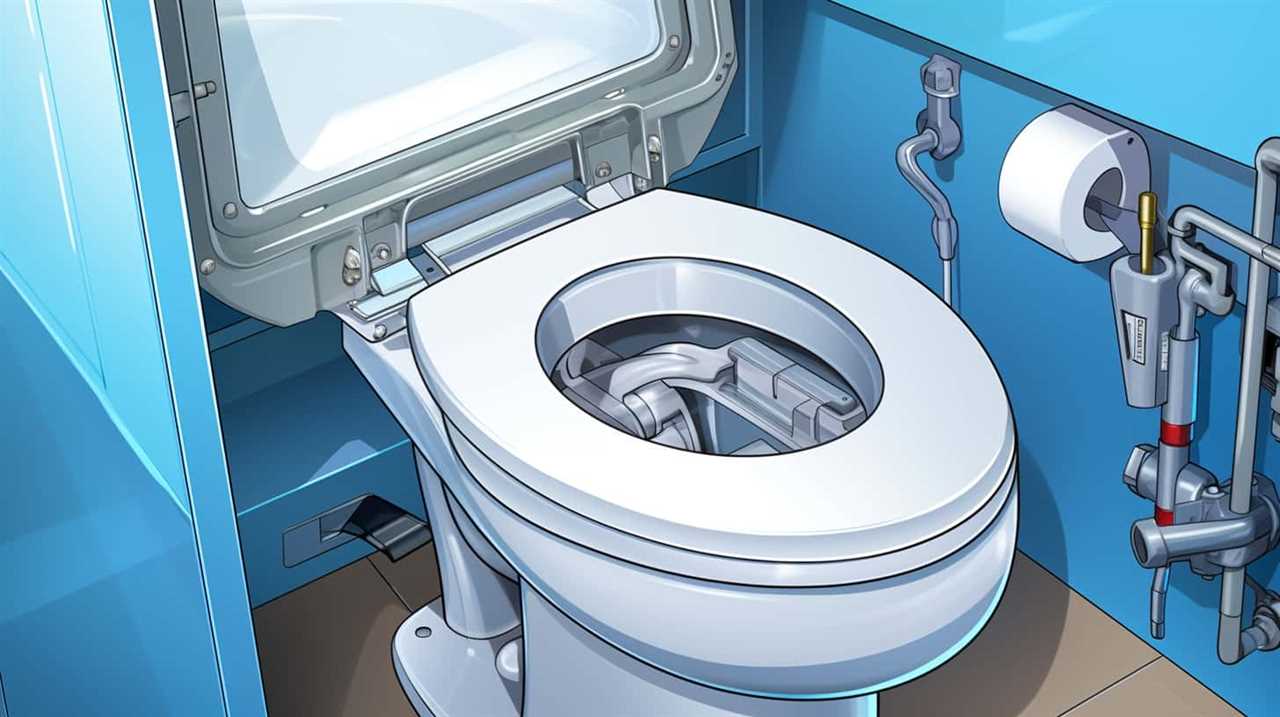
- Brush your teeth thoroughly twice a day, using a soft-bristled toothbrush and fluoride toothpaste.
- Floss daily to remove plaque and food particles from between your teeth and along the gumline.
- Rinse with an antimicrobial mouthwash to kill bacteria and reduce plaque buildup.
- Visit your dentist regularly for professional cleanings and check-ups.
- Maintain a healthy diet and limit sugary foods and drinks that can contribute to gum disease.
By consistently practicing these oral hygiene tips, you can help prevent gum disease and minimize the risk of developing gum pockets.
Now, let’s explore some natural remedies to flush out gum pockets.
Natural Remedies to Flush Out Gum Pockets
Our preferred method for flushing out gum pockets is by utilizing a combination of natural remedies and professional dental care.
These natural remedies can help promote gum pocket healing and prevent further damage. Two effective natural remedies for gum pocket treatment are herbal remedies and oil pulling.
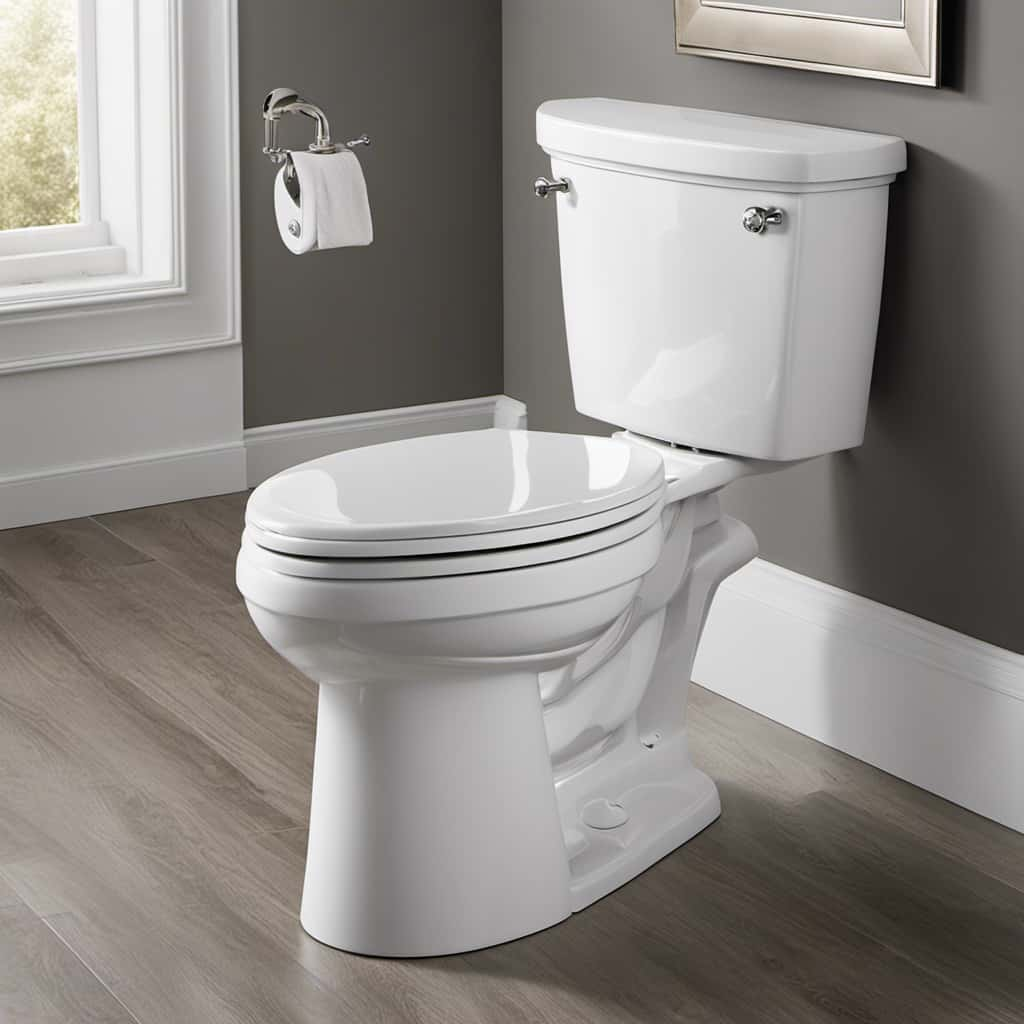
Herbal remedies for gum pocket treatment have been used for centuries due to their antibacterial and anti-inflammatory properties. Some popular herbal remedies include:
- Tea tree oil: Its antimicrobial properties can help reduce bacteria in the gum pockets.
- Aloe vera: Its soothing properties can help reduce inflammation and promote healing.
- Clove oil: Its analgesic and antiseptic properties can provide relief from pain and reduce bacteria.
Oil pulling is another natural remedy that involves swishing oil, such as coconut oil, in the mouth for 10-15 minutes. This technique is believed to remove toxins and bacteria from the gum pockets, promoting gum health.
While these natural remedies can be beneficial, it’s important to consult with a dental professional for a comprehensive treatment plan to address gum pockets effectively.
Professional Treatments for Severe Gum Pocket Cases
For severe gum pocket cases, professional treatments are necessary to effectively address the condition. While natural remedies can provide some relief, they may not be sufficient for severe cases. Professional treatments offer a higher level of expertise and specialized tools to treat gum pockets.
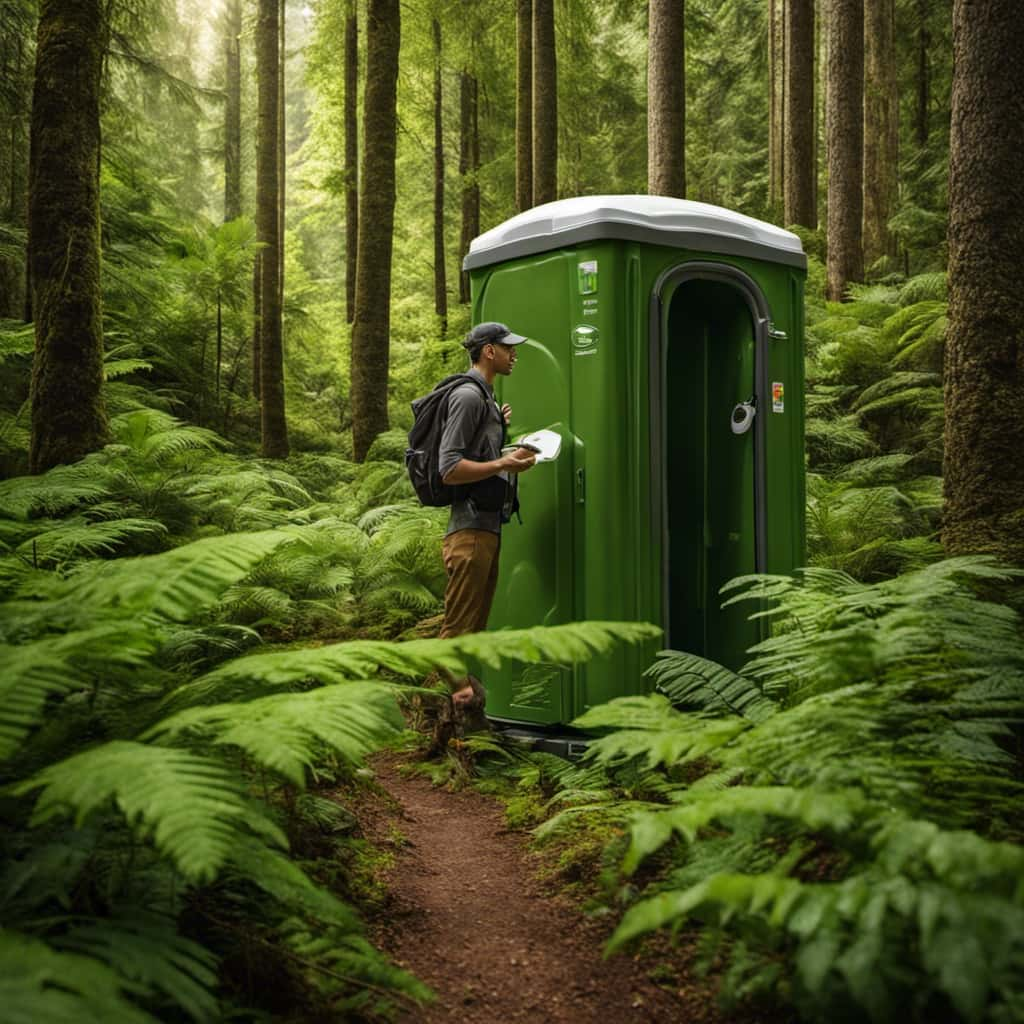
Some of the professional treatments for severe gum pocket cases include:
- Deep cleaning: Also known as scaling and root planing, this procedure involves removing plaque and tartar from the tooth surfaces and below the gum line. It helps to reduce the pocket depth and promote gum healing.
- Laser therapy: This treatment uses laser technology to remove bacteria and infected tissue from gum pockets, promoting gum health and reducing pocket depth.
- Pocket reduction surgery: In severe cases, surgical intervention may be necessary to reduce pocket depth and restore gum health.
- Guided tissue regeneration: This procedure involves placing a special membrane between the gum tissue and the tooth root to encourage the growth of new bone and gum tissue, reducing pocket depth.
- Antibiotic therapy: In some cases, antibiotics may be prescribed to control bacterial infection and promote healing.
When it comes to severe gum pocket cases, professional treatments such as deep cleaning are crucial in effectively managing the condition and preventing further complications. It’s important to consult with a dental professional to determine the most appropriate treatment plan for your specific situation.
Long-Term Strategies for Maintaining Healthy Gums
After undergoing professional treatments for severe gum pocket cases, it’s essential to implement long-term strategies to maintain healthy gums. Preventing receding gums is crucial for overall oral health.
Regular dental check-ups play a significant role in achieving this goal. These check-ups allow dentists to detect early signs of gum disease and provide appropriate treatment. They also enable dentists to monitor the health of your gums and provide guidance on proper oral hygiene practices. By attending regular check-ups, you can address any issues promptly and prevent them from progressing into more severe problems.
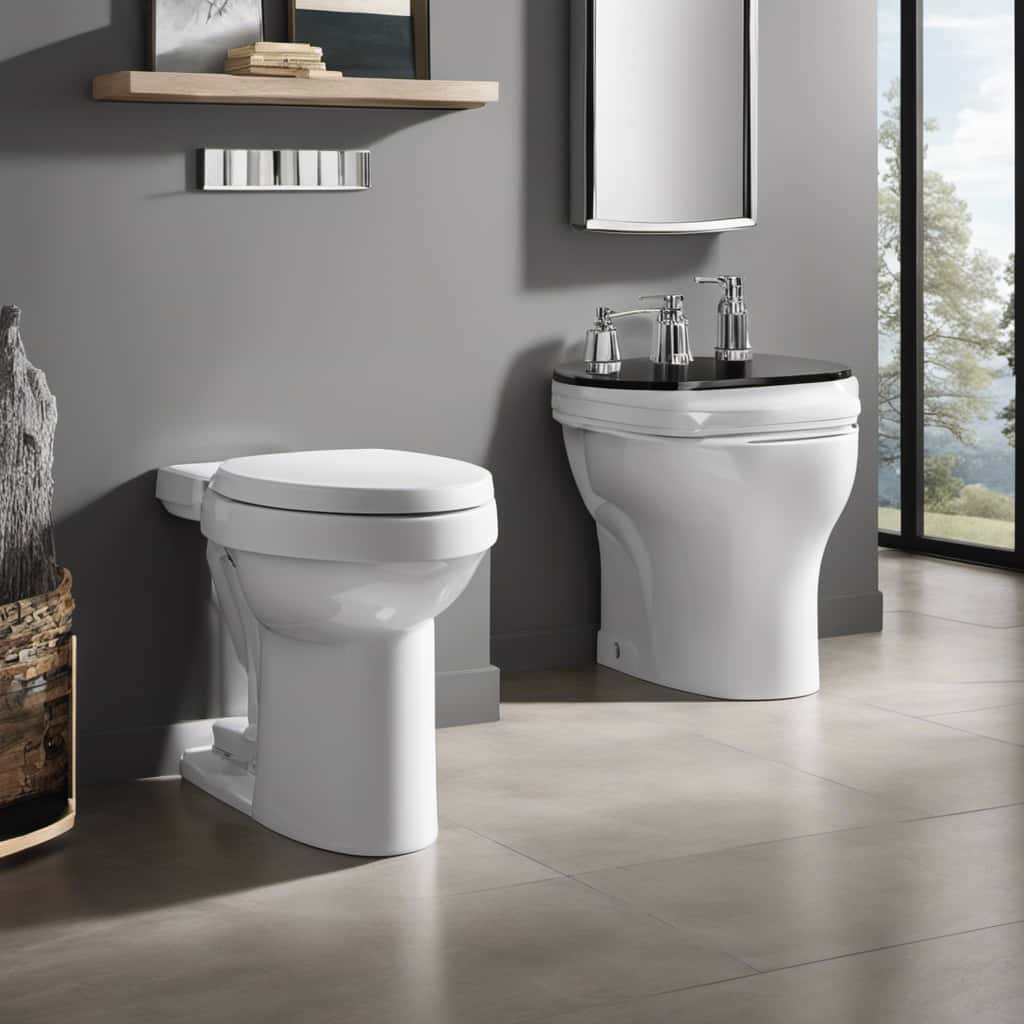
Additionally, dentists can recommend lifestyle changes and oral care routines specific to your needs, ensuring long-term gum health. So, make it a habit to schedule regular dental check-ups and follow your dentist’s advice to maintain healthy gums.
Conclusion
In conclusion, maintaining good oral hygiene is crucial for preventing and treating gum pockets. Regular brushing and flossing, along with natural remedies like saltwater rinses and tea tree oil, can help flush out gum pockets.
However, for severe cases, professional treatments such as scaling and root planing may be necessary. It’s important to remember that healthy gums require long-term care and commitment.
Did you know that 47.2% of adults over 30 in the United States have periodontal disease? This staggering statistic highlights the importance of proper gum care for overall oral health.
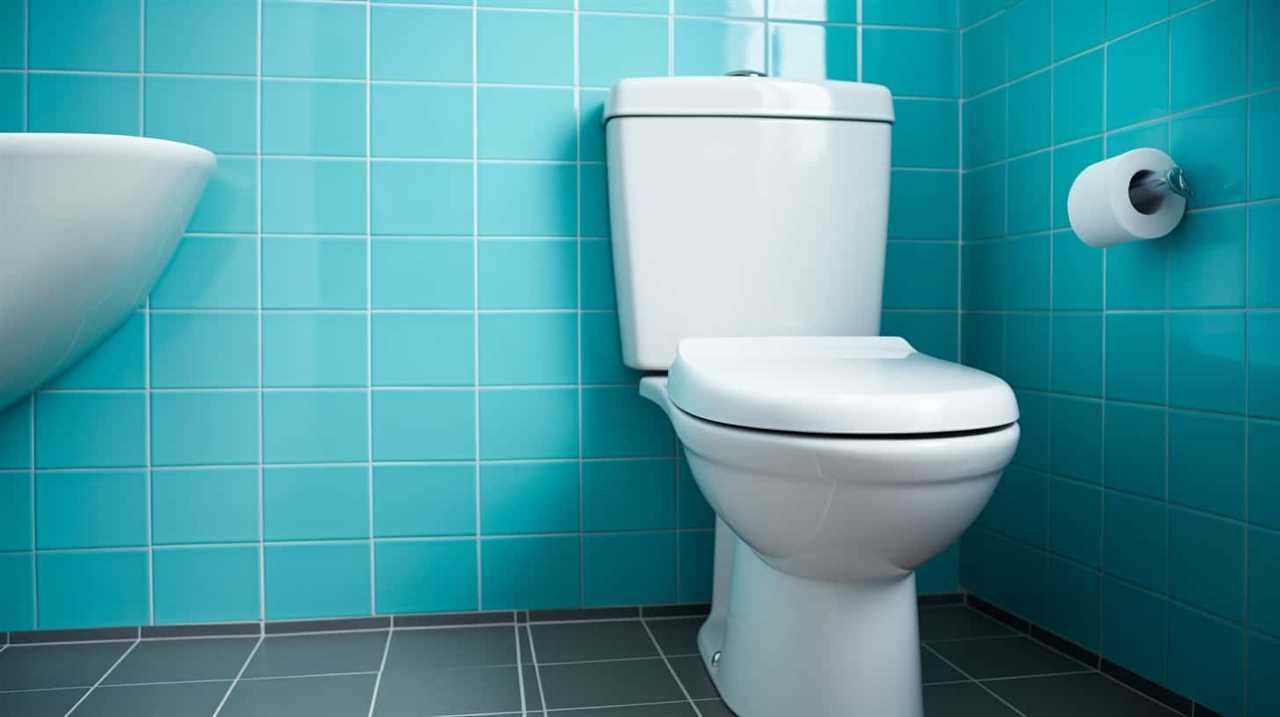
With an impeccable eye for detail and a passion for bathroom-related, Ava leads our editorial team gracefully and precisely.
Under her guidance, Best Modern Toilet has flourished as the go-to resource for modern bathroom enthusiasts. In her free time, you might find Ava exploring antique shops and looking for vintage bathroom fixtures to add to her collection.
FAQ - Advanced Bathroom Queries
How Do You Flush a Non Working Toilet
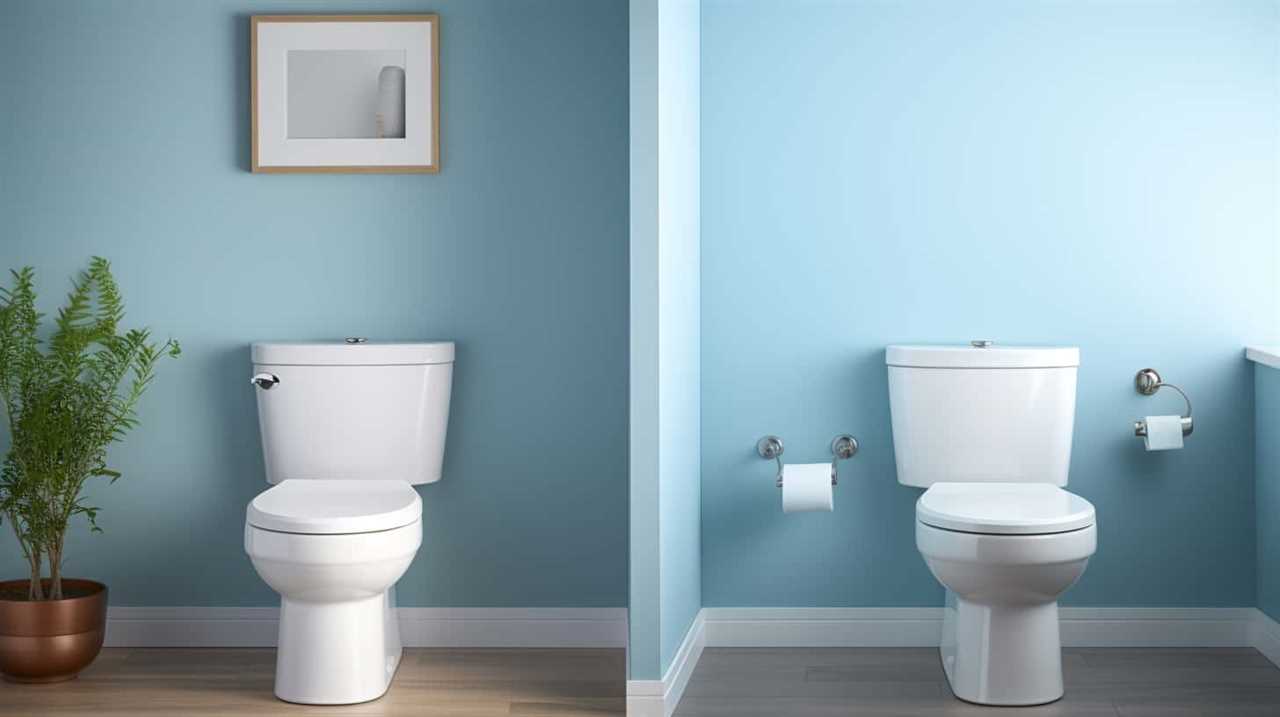
Ever been caught in a predicament with a toilet that won’t flush? Don’t worry, because we’ve got the ultimate manual to teach you how to handle a faulty toilet like a pro.
In this step-by-step article, we will walk you through the process of troubleshooting and fixing your toilet. From checking the water supply to inspecting the flapper valve and clearing any clogs, we’ve got you covered.
So grab your tools and let’s get flushing!
Key Takeaways
- Checking the shut-off valve and water flow is important when dealing with a non-working toilet.
- Inspecting and replacing the flapper valve can help resolve issues with flushing.
- Clearing clogs can be done using a plunger, snake tool, toilet auger, or hot water.
- Testing the flush handle, cleaning the siphon jet, and troubleshooting are essential steps in fixing a non-working toilet.
Check the Water Supply
To check the water supply, we recommend inspecting the shut-off valve and ensuring it’s fully open. Water supply issues can often be the cause of a non-working toilet, so it’s important to troubleshoot this step first.
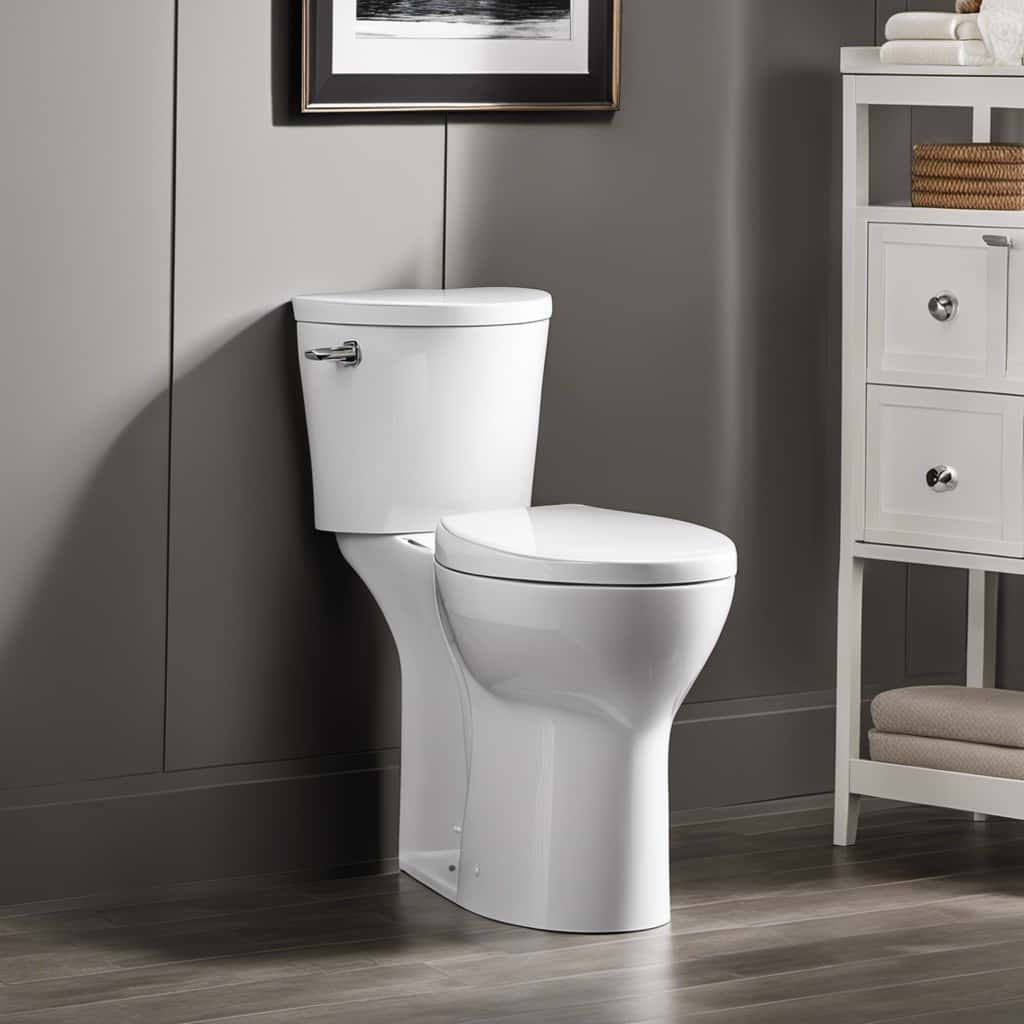
Here are the troubleshooting steps to follow:
- Locate the shut-off valve: The shut-off valve is usually located near the base of the toilet, close to the floor. It can be a lever or a knob.
- Inspect the shut-off valve: Check if the valve is fully open. Turn it clockwise to open it fully.
- Check the water flow: Once the valve is fully open, check if water is flowing into the toilet tank. If there’s no water flow, there may be an issue with the water supply line.
- Test the water pressure: If there’s water flow, but it’s weak or inconsistent, the water pressure may be low. In this case, you may need to contact a professional plumber to address the water pressure issue.
Inspect the Flapper Valve
After checking the water supply, we can now move on to inspecting the flapper valve.
The flapper valve is a rubber seal located at the bottom of the toilet tank. Its role is to hold water in the tank until you flush, and then release the water into the bowl.
To inspect the flapper valve, start by lifting the toilet tank lid. Look for any signs of damage or deterioration, such as cracks or tears in the rubber.

Next, check the chain length that connects the flapper valve to the flush handle. Ensure that it has enough slack to allow the flapper valve to fully close and seal properly.
Clear Any Clogs
To clear any clogs in a non-working toilet, we’ve two options: a plunger or a snake.
First, using a plunger, we can create suction by placing it over the drain hole and pushing down firmly, then pulling up quickly. This should help dislodge any blockage.
If the plunger doesn’t work, we can try using a snake, which is a long, flexible tool that can be inserted into the toilet drain to break up and remove the clog.

Plunger or Snake
We can effectively clear any clogs in a non working toilet by using either a plunger or a snake. When it comes to toilet repair and DIY plumbing, knowing how to use these tools correctly can save you time and money.
Here’s a step-by-step guide on how to clear clogs using a plunger:
- Start by filling the toilet bowl with enough water to cover the plunger’s rubber cup.
- Place the plunger directly over the drain hole, ensuring a tight seal.
- Push down firmly and then pull up quickly to create suction. Repeat this motion several times.
- If the clog doesn’t clear after a few attempts, it’s time to try using a snake.
To clear clogs using a snake:
- Insert the snake into the drain hole, pushing it in as far as possible.
- Rotate the snake handle clockwise to break up the clog.
- Slowly pull the snake out, removing any debris that comes with it.
Water Pressure Options
For clearing any clogs in a non-working toilet, our best option is to utilize water pressure. Water pressure troubleshooting can effectively clear the blockage without the need for a plunger or snake. Here are some alternative flushing methods using water pressure:
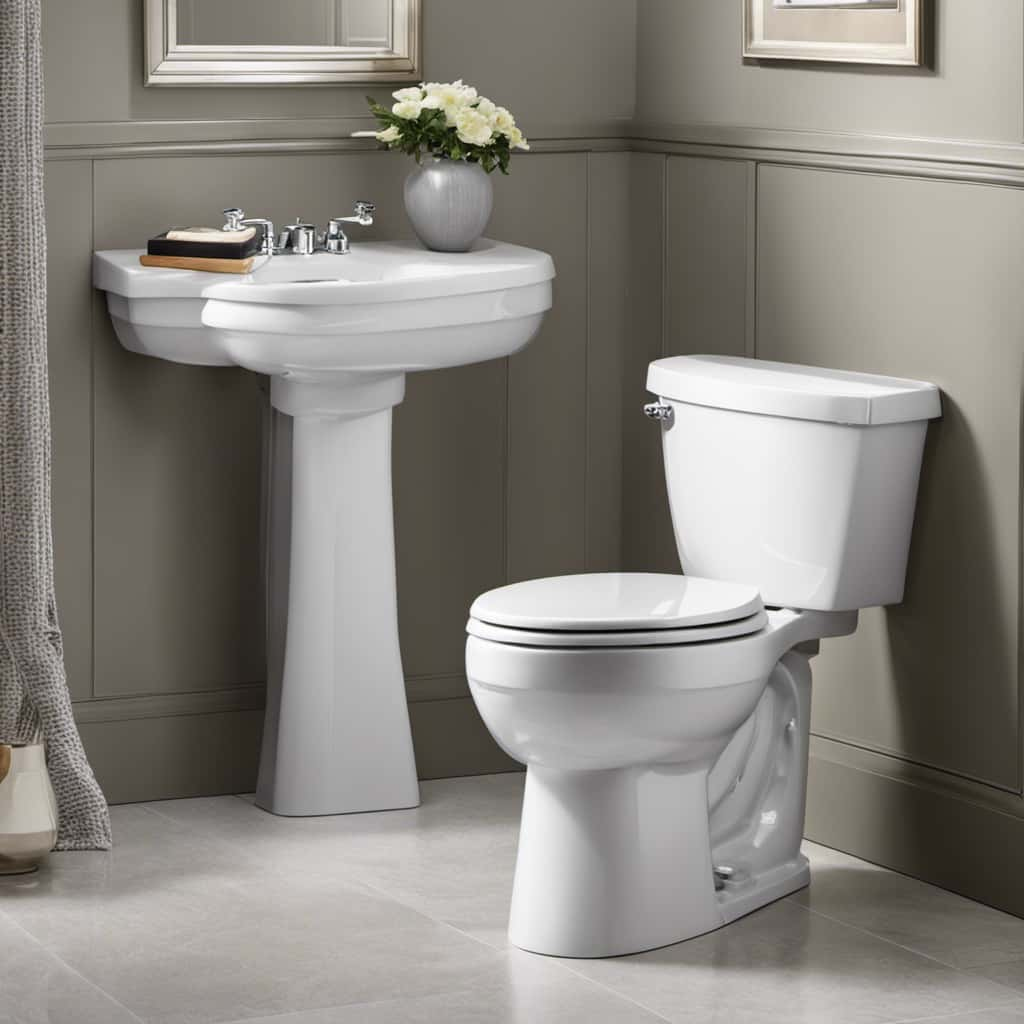
- Fill a bucket with hot water from another source, such as a bathtub or sink. Carefully pour the water into the toilet bowl, aiming for the center of the drain. The force of the water should help dislodge the clog.
- If hot water isn’t available, try using a toilet auger. Insert the auger into the drain opening and rotate it clockwise. This will help break up the obstruction and restore water flow.
- Another option is to use a wet/dry vacuum. Set the vacuum to the wet setting and place the nozzle over the drain. Turn it on and let the suction help remove the clog.
Adjust the Water Level
Let’s now talk about how to adjust the water level in a non-working toilet.
It’s important to ensure that the water level is set correctly for the toilet to flush properly.
To do this, we need to adjust the flushing mechanism, which controls the amount of water that fills the tank.
Proper Water Level
To adjust the water level in a non working toilet, start by using a wrench to loosen the lock nut located on the fill valve. Once the lock nut is loosened, you can adjust the water level by either lowering or raising the float.

Here are some troubleshooting tips for maintaining the proper water level in your toilet:
- Check for any leaks in the fill valve or the flapper valve.
- Ensure that the float isn’t obstructed and moves freely.
- Clean the fill valve and the float to remove any debris or sediment.
- If necessary, replace any worn-out parts, such as the fill valve or the flapper valve.
Flushing Mechanism Adjustment
Adjusting the water level in a non-working toilet can be done by loosening the lock nut on the fill valve and raising or lowering the float. This adjustment is important as it ensures that the toilet flushes properly and prevents any overflow or insufficient flushing.
To adjust the water level, follow these step-by-step instructions:
- Locate the fill valve, which is usually on the left side of the toilet tank.
- Use a wrench to loosen the lock nut on the fill valve.
- Raise the float to increase the water level or lower it to decrease the water level.
- Tighten the lock nut once you have achieved the desired water level.
- Test the flush by flushing the toilet and observe if the water level is now adjusted correctly.
Test the Flush Handle
We can start by checking the functionality of the flush handle. To test the flush lever, follow these steps:
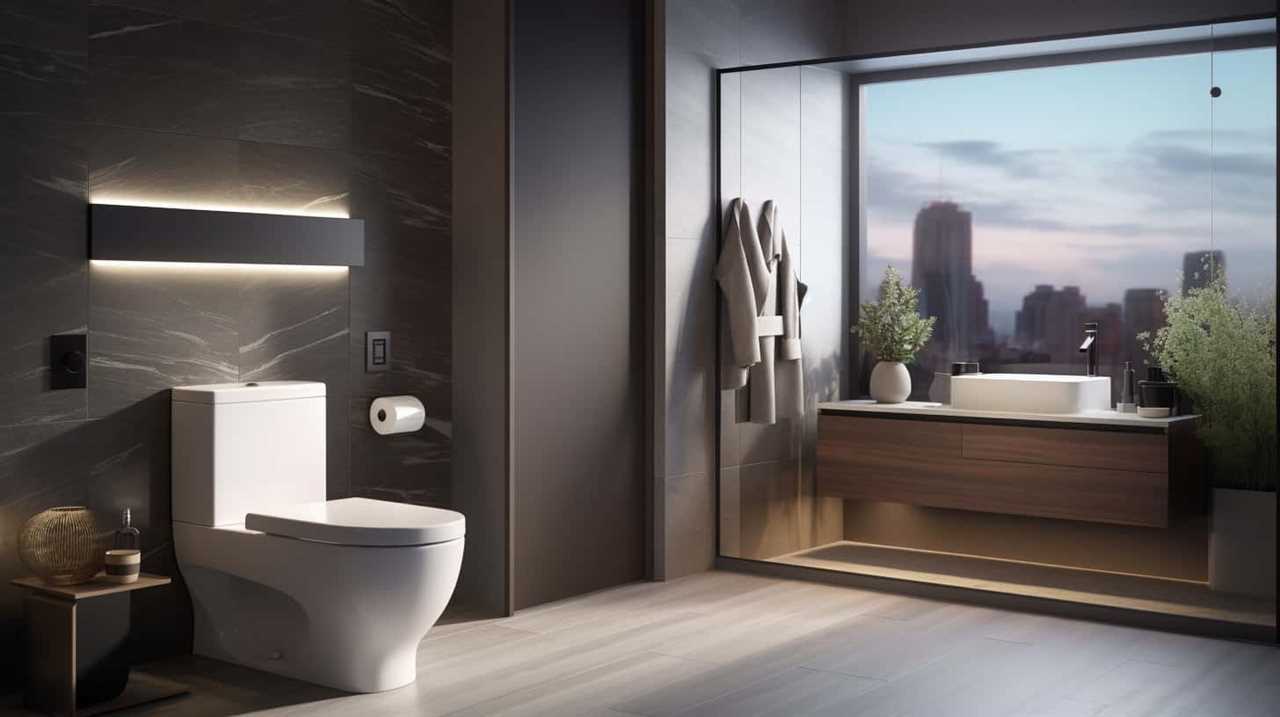
- Ensure the flush handle is properly connected to the flushing mechanism.
- Gently lift the flush handle to see if it moves smoothly.
- If the handle is loose or wobbly, tighten the mounting nut or screw that secures it to the toilet tank.
- Troubleshoot the chain connection by inspecting whether the chain is properly attached to the flush lever and the flapper valve. Adjust the chain if necessary.
Testing the flush handle helps determine if it’s the source of the non-working toilet. By following these steps, you can identify any issues with the flush lever or the chain connection, allowing you to further troubleshoot the problem and restore your toilet’s functionality.
Replace the Flush Mechanism
After testing the flush handle, we can now proceed to replace the flush mechanism. This is an important step in toilet repair and troubleshooting tips. The flush mechanism is responsible for the proper functioning of the toilet, so it’s crucial to ensure it is in good working condition.
To help you understand the process better, let’s break it down into steps using the following table:
| Step | Description |
|---|---|
| 1 | Shut off the water supply to the toilet by turning the valve clockwise. |
| 2 | Empty the tank by flushing the toilet and holding down the handle to drain all the water. |
| 3 | Remove the old flush mechanism by unscrewing the nut that holds it in place. |
| 4 | Install the new flush mechanism by following the manufacturer’s instructions and attaching it securely. |
Clean the Siphon Jet
To properly address the issue of a non-working toilet, it’s necessary to clean the siphon jet. The siphon jet is a small hole located at the bottom of the toilet bowl that helps create a powerful flush. Over time, it can become clogged with mineral deposits and debris, leading to poor flushing performance.

Here are the steps to clean the siphon jet:
- Turn off the water supply to the toilet.
- Use a toilet brush to scrub the inside of the bowl, including the siphon jet.
- Pour a mixture of vinegar and water into the overflow tube to dissolve any remaining deposits.
- Turn the water supply back on and flush the toilet to check if the siphon jet is now clear.
Cleaning the siphon jet is an important part of toilet troubleshooting and fixing a clogged toilet. By following these steps, you can ensure that your toilet flushes properly and efficiently.
Call a Professional Plumber if Needed
If the steps mentioned above don’t resolve the issue, it may be necessary to contact a professional plumber. DIY toilet troubleshooting can be effective for common toilet problems, but there are situations where professional help is warranted.
A professional plumber has the knowledge and experience to diagnose and fix more complex issues that may be causing your non-working toilet. They’ve access to specialized tools and equipment which can help identify the root cause of the problem. Additionally, a plumber can provide expert advice on how to prevent future toilet issues.
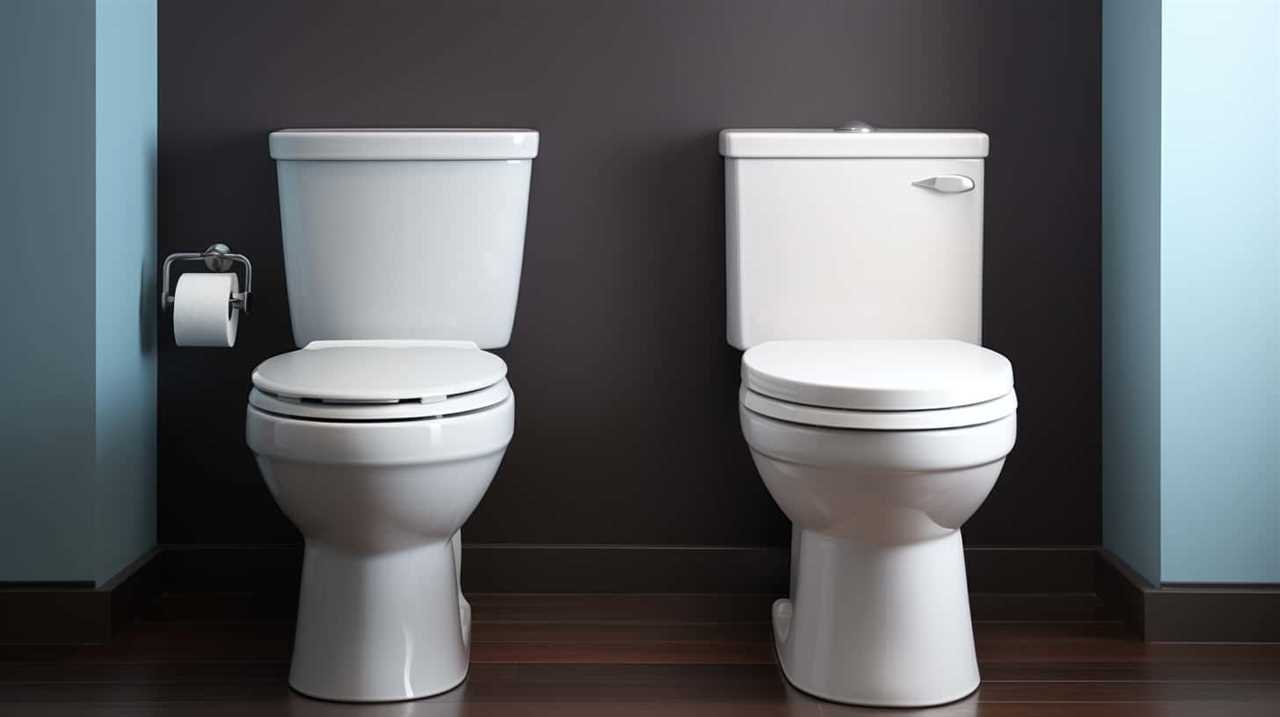
When contacting a professional plumber, make sure to provide them with a detailed description of the problem and any steps you have already taken to troubleshoot the toilet.
Conclusion
In conclusion, by following these step-by-step instructions, you can easily troubleshoot and fix a non-working toilet.
From checking the water supply to clearing any clogs and adjusting the water level, these simple actions can restore your toilet’s functionality.
Remember, if all else fails, don’t hesitate to call a professional plumber for assistance.

With a little effort and the right knowledge, you can quickly resolve any toilet flushing issues and get back to a smoothly running bathroom.
With an impeccable eye for detail and a passion for bathroom-related, Ava leads our editorial team gracefully and precisely.
Under her guidance, Best Modern Toilet has flourished as the go-to resource for modern bathroom enthusiasts. In her free time, you might find Ava exploring antique shops and looking for vintage bathroom fixtures to add to her collection.
-

 FAQ - Advanced Bathroom Queries3 months ago
FAQ - Advanced Bathroom Queries3 months agoWhat Happens if You Sit on the Toilet Too Long
-

 FAQ - Advanced Bathroom Queries3 months ago
FAQ - Advanced Bathroom Queries3 months agoWhy Is My Toilet so Loud When Refilling
-

 Toilet Brands3 months ago
Toilet Brands3 months agoCountries Where You Can’t Flush Toilet Paper
-

 Guides3 months ago
Guides3 months agoTroubleshooting Dropping Water Level in Toilet Bowl: Causes and Solutions
-

 Guides3 months ago
Guides3 months agoChoosing the Right Toilet Flange: A Comprehensive Guide
-

 Guides3 months ago
Guides3 months agoToilet Water Supply Line Sizes: Finding the Right Fit
-

 FAQ - Advanced Bathroom Queries2 months ago
FAQ - Advanced Bathroom Queries2 months agoWhat Happens When You Put Baking Soda in Your Toilet
-

 Guides2 months ago
Guides2 months agoHow to Remove Crystallized Urine From Toilet Bowl





















